#the 2016 version is one of my most popular pieces ever so i wanted to give it another go heh.. i guess they look more like i usually draw!
Photo

I had the opportunity to send some questions to Andrew Liptak about his new book Cosplay: A History so I asked him about his cosplaying days first.
1) What was your first cosplay and what are you working on currently?
My first “real” costume after Halloween costumes was an Imperial Stormtrooper. It was a costume that I’d coveted ever since seeing A New Hope in theaters in 1997, and I’d spent a lot of time trying to figure out how to make one. In my final year of high school, my high school band played music from Star Wars (I played trumpet), and we were able to get a member of the 501st Legion to come and join us.
His costume blew me away, and that summer, he sold me an FX kit (the then-standard Stormtrooper costume that was out there), which I then assembled and wore for a little over a decade before I replaced it with a more accurate version. I still have it: it’s on a mannequin in my basement.
I’ve got a couple of random projects in the works now that are in pretty early stages. I have a Shoretrooper kit from 850 Armor Works that I’ve been piecing together. I’d originally bought it for my wife, but she sort of lost interest, so I’m planning on doing it up as a Captain variant of that particular costume. I also have a First Order stormtrooper kit that I want to put together to replace my existing FOTK (this new kit is plastic, so it’s much, much lighter than my current fiberglass costume.) And finally, I have a 212th Airborne Clone from Revenge of the Sith that is done: I just need to get it to fit me.

2) Has cosplay impacted your life personally?
Cosplay has impacted my life considerably: it provided a community at a time when I most needed it in the years after college. After graduating, I had disposable money and a car, so I was frequently out and about throughout New England trooping with my local 501st garrison. I’ve made some of my best friends in the world through the group, and it’s still a big part of my life.
But it’s also imparted an element of what I call “practical creativity”. I grew up in a household that had a workshop and I learned from my dad how to do things like cut wood, construct things out of it, change my own oil in my car, and generally do things on my own: working with my hands. Cosplay reinforced that: it’s helped me realize that with time, patience, and a little research, you can do a lot of things on your own: I’ve painted houses, redid my bathroom, fixed leaks/cracks/carpet/siding, etc at my house, and found creative solutions that I might not have arrived at if I hadn’t spent time building costumes. I know more about glue, paint, cutting materials, and whatnot, because of that experience.
3) What trends have you seen in cosplay from when you first started till today?
There are so many things that have changed! I think the first is just how popular science fiction and fantasy franchises have come since I started back in 2003: Star Wars has always been a mainstream thing, but the act of cosplaying has come a long way along with that growing popularity. Those films and genres have always been popular for good reasons: they’re exciting and interesting, and it’s good to see people reacting to it more and more, and with less shame than they might have before.
There are two other big trends that come to mind: the advances in how we use materials to build costumes has changed quite a bit. Materials like EVA foam and Worbla weren’t nearly as popular when I started, so the adoption of those materials makes it easier for cosplayers to start in on this hobby. Things like 3D printing and YouTube tutorials also really help.
The other is logistics, helped along by big online platforms like Amazon or Etsy: it’s easier than ever to buy a costume or the components. When I bought my first set of armor back in 2003, I had to know a guy who know a guy. Now, you can just click a couple of buttons.
4) What's the process like in writing this book?
Long. The pitch for me to write it first came in 2016: the earlier version would have been entirely about the 501st Legion. But as I researched, I realized that I couldn’t just tell the story of the group: I had to expand it out beyond its borders to talk about the context of where it came from, which is what this ultimately became.
From there, it was a matter of coming up with an outline, which guided what I had to research: there was a lot of work in finding early examples of cosplay, looking through documents and records from older conventions and fan groups to try and get a clear story for how this hobby evolved over the decades.
The other component of that was interviews: I attended a whole bunch of cons in 2019 before the pandemic, and interviewed a whole bunch of folks about their experiences and history as cosplayers, and photographing them at cons. It was a lot of fun. It was also the tip of the iceberg: there are so many people in the cosplay field, with so many stories, and while I got a good cross-section of folks, there were so many rocks that I’d tip over to find a whole new thread of stories and people to talk to. But, the reality of the book is that there are deadlines and a finite number of pages, so you take what you can get and work with it.
5) Has the book changed from the original conception to how it is today?
Very much so. As I noted a moment ago, I had originally set out to put together a book about the history of the 501st Legion. That didn’t end up happening for a variety of reasons, but I repackaged and repitched it as a history of cosplay as a whole. (The original title was Knights in Plastic Armor). I’m happy that I did that, because the larger story of cosplay is rich and fascinating.
But even while writing the book, we made some significant changes. I had originally outlined the book in three parts: When We Cosplay, Why We Cosplay, and House We Cosplay, which has been reorganized a bit for this final version (it’s much stronger now). There were also some interesting topics that I came across while researching: a picture of a reenactment in the 1800s led me down the path of living history and military reenactments, which I included. A chance encounter with a book about Jules Verne led me to track down details about a costume party he threw, and things like that: every new revelation brought with it new details to uncover, and every new interviewee brought me new fidelity to the history.
A good example here is a woman named Astrid Bear, who was heavily involved in the science fiction fan community. She was party to a lot of those early developments from an early age, and she outlined something really interesting to me in my interview with her: Star Trek had a huge impact on the cosplay community, because the costumes were relatively comfortable. When the show arrived, costuming at cons was largely restricted to designated times for specific events. When Star Trek arrived, it brought in new fans, but also new attitudes: fans started wearing the costumes in the halls (there was some friction from long-term con goers about this!) and that change in culture helped to bring about the con environment that we see these days.
6) Were there topics cut from the book that you hope to revisit one day?
Not so much things that were cut: we made some cuts for length and clarity where I got a little too into the weeds, but there were some things that I’d hoped to have gotten to that I didn’t end up covering that much: I wanted to do a chapter about Furries, but just didn’t get to that. I also wanted to put together a chapter about the KKK and how they used masks to convey their horrible views, and the repercussions that came with that: masking laws and whatnot that still are on the books today. Author Arthur Conan Doyle liked to dress up as his character Professor Challenger, which I learned too late to include as another early example.
I’m hoping though, to actually write those chapters (and some others — I have a short list) up, and release them to my newsletter, Transfer Orbit as a series that I’m thinking I’ll call the “Lost Chapters”, which should be fun to do in the coming months.
7) Advice for first time cosplayers?
I think the best advice that I have is to make characters that you love: don’t pay attention to the cycle that we’ve found ourselves in where everyone rushes to make the most popular character of the moment (and by extension, don’t get sucked into the world of social media likes and churn). Make that obscure character that you’ve always wanted to do, take the time to make the costumes that you want to make, rather than rushing to meet a self-imposed deadline or to stay relevant.
Also, make sure you use proper ventilation when you’re using chemicals / sanding / painting, etc., wear safety equipment, and so forth. Safety first!
11 notes
·
View notes
Note
How did you come up with everyone’s names? I see a lot of them are Japanese in origin?
That’s a very interesting question actually!!
So, specifically the Okutama crew are from Japan. I’ve been doing a plotline with them so that’s why most of the names on the blog are Japanese atm. Lol.
My characters names come from, all sorts of places. But I’ll just talk about Okutama specifically because it’s very interesting to me.
Most of My Okutama characters Date back to around.. 2015? 2016? Somewhere around there? They originally were fan characters for a VERY problematic game which I shall not mention. In fact, I use to run the most popular role playing group FOR that game on deviantart. It was a very weird time.
(Also warning, I am learning Japanese- but like.. I’m essentially a -1 year old while speaking in Japanese. So bare with me-)
Are Yoru- Are was the first character I ever made for this fandom, She originally was a self insert because the game allowed you to customize your MC and I essentially made a weird murdery version of me. Their original name was: アレクシス (Arekushisu) よる (Yoru), Which was essentially a very badly google translated version of my dead name, and the word Night (because she was edgy you see), Her name is now just Are because 99.9% of the time back then we called them アレ-ちゃん (Are-Chan). (And also the connection to my dead name made me feel weird lol and the connection to ME made me feel weird as well). Are is probably the most incomprehensible name in actual Japanese.. cause アレ is not, a name. But she has been called Are for so long I can’t imagine calling them anything else.
Yukai Mori (Yukai Hayashi)- Yukai was the second character I made, I’m like 99% sure. She was the first OC I posted to the roleplay group. She hasn’t changed much over the years, besides just, generally making her more realistic. I don’t remember the exact origin of ユカイ 林 (Yukai Hayashi). I remember wanting to give her a very unassuming name, so knowing like 11 year old me I might have just been like “Popular Japanese Names 2016” or whatever. Her new last name 森 (Mori) however comes from the word Forest. Hayashi means Woods. You can tell cause both kanji look like groups of trees 林森 . It was a subtle way to make her distance herself from her family while also still being connected to it. Her nickname is Kai-Chan! Or カイ-ちゃん
Chie Hayashi (チエ 林)- Chie’s origin is Actually really cute! She’s named after my Moms college roommate. I made her because Yukai originally had like- 12 sisters or something? But that’s shrunk down to 2- because jfc.
Kyandi Amai- Kyandi is very easy to.. figure out. she’s a person made of candy.. so.. キャンぢ 甘い (Kyandi Amai), She canonically named herself, cause I don’t think her mom would.. just name her candy baby.. candy.. She’s named after the borrowed English word for Candy, vs the word Ame (あめ), Amai however does mean sweet.
Ai Amai- Kyandis Mom, She’s a witch who accidentally turned a piece of candy alive. 愛 甘い (Ai Amai) her name is ALSO a pun. Ai means love, therefore her name would essentially be Love Sweets or I love Sweets.
Hana Seta (花 瀬田)- HANA! my beloved! She was the first one in my second generation of Okutama OCs. Where I shifted from roleplay groups to solely roleplaying with my friend Morgan. Hana was originally created as a mascot for Instagram, but solely shifted into a wackier character. I don’t remember Hana’s name meaning anything in particular. Her name means Flower and her last name means essentially rice farmer.
Kagayaki Tekikya (輝き滴下)- Originally based on J.D from Heathers.. which.. is an incredibly funny fact when you look at the character now. His last name is based on Tekiya which are the predecessors to the Yakuza. Over the years the extra K was added in and, I just cant spell it any other way. I don’t think that Kagayaki itself tho had a specific origin for me, though it does mean shiny. His nickname is Kaga-Kun or かが-くん, He can also go by 빛나는 테키키아 , Which is what his mother use to call him in her native language (Korean), he doesn’t often go by this though.
Keh Spo (ケースポ): So in Japan, normally before you get to know someone you would say their last name first, like for example Doe John instead of John Doe. So Keh’s name is Spo Keh… cause.. he’s spooky… and a ghost hunter.. thats it thats all there is too it.
Makai Mori (魔界 森): The last of the Hayashi Sisters. Makai essentially means hell or evil. Her name was not given to her by the Hayashi family, it was more of a nickname given to her before she got adopted. Makai’s demon name or True name is Beelzebub, She was named after the real Beelzebub due to her being a glutton demon and also due to her carnivorous nature attracting flies. Demons have two names, due to havinf a demons true name means having power over that demon. She also has a tendency to be called a Hellion but in a very literal sense.
Evey Aiki (イービー あいき): Aiki is a word for love. Which relates to Evey’s um… obsessive tendencies.. However I believe I chose the name Evey just because it sounded pretty. Its not a Japanese name but it is a Latin one apparently! And it means life! Which is… ironic… considering its um.. Evey..
Uru Nanamo (ウルナナモ): I do not fully remember why I named Uru this, and the translation of his name doesn’t give me much clues. However her name means to possess and budding flowers. Due to him being adopted allot, she has a few other last names as well. 朝原 (Asahara which means Field) (たなか, Tanaka, which… also means field..). He is also called Onee-Uru or Big Sister Uru. As a term of endearment by Atsu.
Atsu Kaigan (アツ 海岸): I also do not fully remember where Atsu’s name comes from exactly. BUT: It means Twin Coast!
Yuki Sho (雪翔): I wanted Yuki and Mizuki’s names to rhyme some what because they’re twins. Yuki means snow, and Sho means Royal essentially? I chose Sho because it comes from the Ryukyuan kingdoms Royal family.
Mizuki Sho (ミズキ翔): Mizuki’s name is based on a flowering tree! So he is based on spring vs Yuki who is based on Winter.. They both have a yin yang sort of thing about them. Mizuki is normally a feminine name but it is sometimes used as a male name.
TW: Because some of my characters are from the past, there are some darker themes in the story. Nothing below here goes into detail however i will explain the basic description of certain things.
Specific TWs: Child Abuse, Prositution, Historical Sexism, Just Yknow general stuff you’d find in the 1400s unfortunately.
Some Titles my Characters Have:
Yukai: Former Wakagashira of The Hayashis. Essentially what that means is that Yukai use to be the second highest ranking in her family and would handle allot of the different jobs and what not and organize things. (Side note, The Hayashis would be essentially a small town mafia. So- yknow. They would have different rules than your most popular Yakuza organization.. so just suspend your disbelief a little that there’s,, high ranking women in this mafia... cause thats not accurate irl—-)
Are: HOLY SHIT SHE HAS SO MANY TITLES. Okay. So. In order of which she got them.
Kamuro (A child courtesan who was being trained by an Oiran (a high ranking prostitute) They would be in charge of running errands and getting food for their Big Sister/Oiran)
Oiran (A high ranking Prositute, who was trained to do performance art, like tea ceremonies, dancing, music, etc.)
Maiko (A young girl who is training to be a Geisha.)
Geisha (A Entertainer which specializes in the performing arts, Mostly singing and dancing)
Maid (Low Ranking Servant, mostly does chores and cooking)
Otoshiyori (Personal Servant/Assistant to the Emperor and his Wife, the Empress)
Sokushitsu (Concubine)
Kikoe-Ogimi (Grand Royal Priestess)
Myobu (High Ranking Kitsune)
Chie: Current Oyabun of the Hayashi’s, Basically the leader of the Hayashi Family mafia due to her parents dying.
Hana: Hime Hana, Princess Consort of Hell. because she’s currently the wife of Lucy Ferr, one of the princesses of hell, she has a Royal title specifically only in hell. (It’s a Long Story). There are more common terms for princess than Hime, but due to Hana’s kinda old fashioned style she would probably use Hime. She also does not have the title “Her Imperial Highness” due to her not being in a ruling position in Japan.
Kagayaki:
Former Wakagashira of The Tekikya Family.
Maiko (Geisha and Maiko is traditionally a only female practice, however, considering theres literally portals to hell in town, most people don’t care in this universe-)
Jenn-Chan, Onee-Jenn (Full Name: Jenn-Da-Benn, or Big Sister Jenn. This is Kagayaki’s drag queen persona, Her style is mixing together modern j-fashion and traditional clothing such as Kimonos and what not. Known for accidentally shattering a window with one of her heels)
Keh:
Itako (A Blind spirit medium)
Miko (A Shrine Maiden in Shintoism)
(Both of these terms tend to be female only, but gender is fucky in this universe so-)
Yokai (This is a self proclaimed title, He also sometimes calls themself a protector of Yokai)
Ai:
Grand Witch of Okutama (Shes a very powerful witch lol)
The Original Onna Musha (Onna Musha is a term to refer to Female warriors normally alongside Samurai, due to Ai being old as dirt and also being a very powerful Warrior she is often called this)
Makai: Former Shateigashira of the Hayashis
Uru: Kami no Okurimono (Gift of Gods, A title given to him from his first family. Who was yknow.. a cult..)
Atsu: Hogo-Sha no Kami (Protector of Gods)
Yuki:
Hime Yuki (Princess Yuki)
Kamura
Oiran
Waremechan (Essentially means Cunt-Chan. A very offensive title given to her after she died)
Mizuki:
Oji Mizuki (Prince Mizuki)
Shi No Oji (Prince of Death, Given to him after his death as a way to respect him.)
2 notes
·
View notes
Text
hermes pochette kelly 17
Hermès Kelly Bags
International cargo of items could also be subject to customs processing and extra expenses. Sign up for VIP INSIDER early access to new restricted editions and particular provides. Anonymous mentioned...Access to our online shopping, christian louboutin sneakers,search the shoes that you simply dreaming of all of your life. Protect the interior of your Birkin from stain by utilizing CloverSac Purse InsertThe date indicated when the value was final recognized and where. All gadgets are verified and hand inspected by EMIER specialists.
Thanks to the star of the movies of Alfred Hitchcock, who grew to become the young princess of Monaco in 1956, the Kelly stays the most emblematic of all Hermès bags. Φ0.4mm, Φ0.5mm, Φ0.6mm.There are 22 colours, as a result of the photographs has color aberration, I really cannot describe the colour precisely, so please look .. This piece comes full with a protecting dust bag. In their 2019 Resort present, Hermès miniaturized the Picnic Kelly in a number of classic colorations.
The inside is lined with Bubblegum 5p lambskin leather and has... The interior is lined with Rose Azalee chevre and... Hermès was properly aligned with Kelly’s classic style and blue blood lineage. This iconic design boasts an evolution that reads like a timeline of good dwelling. Though similar to the Birkin in many ways, the Kelly’s extra compact inside, subtle strains and single high deal with make it the ultimate ladylike bag. Due to their popularity, the high demand for their purses, and the excessive costs they sell for, the number of fake Hermès Kelly purses on the market is astonishing.
Known mostly for his “JPG Shoulder” bags, he created a variety of different baggage on this listing, together with the Kelly Flat. Designed for Spring/Summer 2007, specifically so that it can be collapsed, tied collectively, and transported easily, the Kelly flat is a superbly moveable version of the Kelly. It is distinct from other Kelly luggage because of the strap belt closure, and came in a pair supplies including supple Swift and delicate Veau Doblis suede. IIn 2016, Hermès shocked some shoppers when they started to supply a collection of baggage that appeared like a special order, but lacked the enduring and fascinating Horseshoe stamp. These baggage were titled “Verso”, in reference to the contrasting interiors that give these luggage an interior shock. Derived from the French word for “flash”, the Éclat assortment extends far past merely the Kelly line.
First, it fits my large iPhone 6 Plus with its case comfy (so important!). On prime of that, I’m able to add a lipstick, some cards and cash, and even sunglasses if I really want, though it gets to be a tighter squeeze at that point. wikipedia handbags The little strap up top has some “give” and flexibility to stretch so that you simply can fit your hand underneath to hold by it’s prime “handle”. All Handmade Hermès replica luggage' pictures at DesignerBound.com are of actual product and you'll obtain what you see.
It has every little thing you could possible need from a knockoff. It is much more tough to score a Kelly Danse! So, in case you are ever provided one in boutique, take it.
Some of these are absolutely beautiful, but the Pliplat is not aesthetically appealing. Also, the Verrou Chaine Mini hardware reminds me of one of the ten locks on my Aunts’ apartment in New York. And now that I have all four clutch kinds I ever needed from Hermes, you are probably questioning if I truly have a personal favorite… and sure, well sure I do…. For me, it would have to be the Kelly Cut, for all the explanations I even have talked about above. Neither bag is definitely available, though we've seen more Mini Kelly 20s than Pochettes lately. Mini Kellys additionally appear extra well-liked on social media or at least extra hyped up than the Pochette.
To maintain your important belongings, on the inside the bag has 3 internal compartments that can be cleverly used to fit your modern way of life. From dusk ‘till down this purse provides every little thing you need. Even at its exterior you might have a big zipped pocket where you can squeeze your telephone effortlessly. https://phoenet.tw/replicas-hermes-bags/replica-kelly-pochette.html Our in-house consultants including gemologists, horologists and luxury brand authenticators examine hundreds of items daily, ensuring every thing we sell is 100 percent authenticity assured. Women's purses and purses have come out in numerous patterns. The colors blended with good design and precious beads give an superior look.
This is a fully origainal design of bucket bag sample. Free obtain pattern, Add to shopping cart and select free checkout to get them.Free patterns are very different from collect patterns, it .. The Kelly Cut has a pointy rectangular form and is longer and thinner than the Kelly Pochette. Although the Kelly Cut is commonly considered as more elegant, each types are elegant and versatile, transitioning from day to night effortlessly. The Hermes Kelly clutch value retains its worth because of the rarity and high demand.
Other cheap imitations have slight discolorations, incorrect font or uneven surfaces which may be huge faux alerts, but not mine. The name "Birkins" is originated from the actress Jane Birkins. There are various designs of Hermes Birkin purses for girls to select from. Many women wish to buy extra items although they already had one since these purses are thought of as a superior style of trend developments. Owning one can instantly elevates one to a higher style status. The elegant characteristic and confidence that Hermes Birkins handbags offer ladies rank them essentially the most sough after manufacturers in most women's purchasing lists.
This was largely attributed to the dimensions of the bag throughout a time when the smaller wristlet purse was the style du jour. This Hermès Kelly Pochette is the perfect downsized Kelly, handcrafted from Swift leather in Blue Frida - a vibrant blue hue that's topped with gold-plated hardware. This 2020 bag ('Y' stamp) comes in store-fresh, unworn condition and arrives with all its accessories.
0 notes
Photo
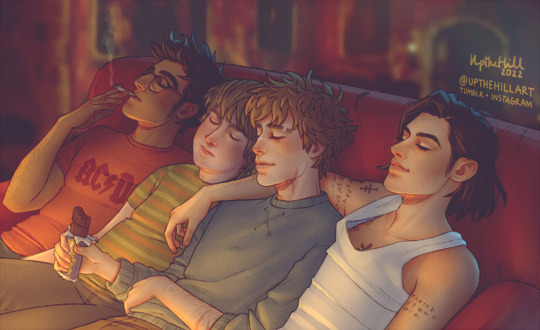
2022 Redraw of 2016 Marauders
#the 2016 version is one of my most popular pieces ever so i wanted to give it another go heh.. i guess they look more like i usually draw!#also last post on queue - not sure when more art is to come! I'll post an update soon#marauders#sirius black#remus lupin#james potter#peter pettigrew#mwpp#marauders era#wolfstar#gryffindor#hogwarts#harry potter#smoking#cigarette#background not mine#upthehillfanart
8K notes
·
View notes
Text
Harry, Meghan and me: my truth as a royal reporter
I've covered elections and extremism, but nothing compares to the vitriol I've received since I started writing about the Sussexes
By Camilla Tominey, Associate Editor27 March 2021 • 6:00am
It is probably worth mentioning from the outset that I never, ever, planned to become a royal reporter. I mean, who does? It’s one of those ridiculous jobs most people fall into completely by accident.
I certainly wasn’t coveting the position when I first found out how bonkers the beat could be after covering Charles and Camilla’s wedding in 2005. Desperate for ‘a line’ on what went on at the reception, journalists were reduced to flagging down passing cars in Windsor High Street and interrogating the likes of Stephen Fry about whether they’d had the salmon or the chicken.
Watergate, this wasn’t.
Yet when my former editor called me into his office shortly afterwards and offered me the royal job ‘because you’re called Camilla and you dress nicely’, who was I to refuse?
Having planned to get married myself that summer, and start a family soon afterwards, I looked to the likes of Jennie Bond and Penny Junor and figured it would be a good patch for a working mother as well as being one I could grow old with. Unlike show business, when celebrities are ‘in’ one minute and ‘out’ the next, the royals would stay the same, making it easier to build – and keep – contacts.
So if you’d told me that 16 years later, I would find myself at the centre of a media storm over a royal interview with Oprah Winfrey, I’d have probably laughed in your face. First of all, only royals like Fergie do interviews with Oprah. And since when did journalists become the story?
Yet as I have experienced since the arrival of Meghan Markle on the royal scene in 2016 – a move that roughly coincided with Twitter doubling its 140-character limitation to 280 – royal reporters like me now find themselves in the line of fire like never before.
We are used to the likes of Kate Adie coming under attack in the Middle East, but now it is the correspondents who write up events like Trooping the Colour and the Royal Windsor Horse Show having to take cover from the keyboard warriors supposedly defending the Duke and Duchess of Sussex’s ‘truth’.
Accusations of racism have long been levelled against anyone who has dared to write less than undiluted praise of Harry and Meghan. But even I have been taken aback by the vitriol on social media in the wake of the couple’s televised two-hour talk-a-thon, in which they branded both the Royal family and the British press racist while complaining about their ‘almost unsurvivable’ multimillionaire lives at the hands of the evil monarchy. And all while the rest of the UK were losing their loved ones and livelihoods in a global pandemic.
Having covered Brexit, general elections and stories about Islamic extremism, I’ve grown used to being sprayed with viral vomit on a fairly regular basis, but when you’ve got complete strangers trolling your best friend’s Instagram feed by association? That’s Britney Spears levels of toxic.
Having a hind thicker than a rhino’s, it wasn’t the repeated references to my being ‘a total c—’ that particularly bothered me, nor even the suggestion that I should have my three children put up for adoption. At one point someone even said it would be a good idea for me to drink myself to death like my mother, about whose chronic alcoholism I have written extensively.
No, what really got me was the appalling spelling and grammar. I mean, if you’re going to hurl insults, at least have the decency to get my name right.
Yet in order to understand just how it has come to pass that so-called #SussexSquaders think nothing of branding all royal correspondents ‘white supremacists’ regardless of who they write for, or sending hate mail to our email addresses, offices – and in some cases, even our homes – it’s worth briefly going to back to when I first broke the story that Prince Harry was dating an American actor in the Sunday Express on 31 October 2016. Headlined: ‘Royal world exclusive: Harry’s secret romance with TV star’, the splash revealed how the popular prince was ‘secretly dating a stunning US actress, model and human rights campaigner’.
Despite my now apparently being on a par with the Ku Klux Klan for failing to acknowledge Meghan as the next messiah, it was actually not until the fifteenth paragraph of that original article that the ‘confident and intelligent’ Northwestern University graduate was described as ‘the daughter of an African-American mother and a father of Dutch and Irish descent’.
Call me superficial, but I was genuinely far more interested in the fact that Harry ‘I-come-with-baggage’ Wales was dating a former ‘briefcase girl’ from the US version of Deal or No Deal than the colour of her skin. A ginger prince punching well above his weight? This was the stuff of tabloid dreams. Little did I know then that covering the trials and tribulations of these two lovebirds would turn into such a nightmare.
The online hostility began bubbling up about eight days after that first story, when Harry’s then communications secretary Jason Knauf issued an ‘unprecedented’ statement accusing the media of ‘crossing a line’.
‘His girlfriend, Meghan Markle, has been subject to a wave of abuse and harassment’, it read, referencing a ‘smear on the front page of a national newspaper; the racial undertones of comment pieces; and the outright sexism and racism of social media trolls and web article comments’. Meghan’s mother, Doria Ragland, had apparently been besieged by photographers, while bribes had been offered to Meghan’s ex-boyfriend along with ‘the bombardment of nearly every friend, coworker, and loved one in her life’.
Suffice to say, I did feel a bit guilty. Although I hadn’t written anything remotely racist or sexist, I had started the ball rolling for headlines like the MailOnline’s ‘(Almost) straight outta Compton’ (referencing a song by hip-hop group NWA about gang violence and Meghan’s upbringing in the nearby LA district of Crenshaw), along with her ‘exotic’ DNA (which I subsequently called out, including on This Morning in the wake of ‘Megxit’ in January last year).
Omid Scobie, co-author of Finding Freedom, a highly favourable account of the Sussexes’ departure from the Royal family, written with their cooperation last summer, would later insist that the couple knew the story of their relationship was coming out and were well prepared for it.
I can tell you categorically that they weren’t, since I did not even put a call into Kensington Palace before we went to press for fear of it being leaked. (I did later discuss this with Harry, when I covered his trip to the Caribbean in November 2016, and to be fair he was pretty philosophical, agreeing it would have come out sooner or later. But that was before the former Army Captain decided to well and truly shoot the messenger, latterly telling journalists covering the newly-weds’ tax-payer-funded October 2018 tour of Australia and the south Pacific: ‘Thanks for coming, even though you weren’t invited.’)
The royal press pack is the group of dedicated writers who cover all the official engagements and tours on a rota system, in exchange for not bothering the royals as they go about their private business. It was a shame this ragtag bunch, of which I am an associate member, was never personally introduced to Meghan when the couple got engaged in November 2017.
I still have fond memories of a then Kate Middleton, upon her engagement to Prince William in November 2010, showing me her huge sapphire and diamond ring following a press conference at St James’s Palace with the words, ‘It was William’s mother’s so it is very special.’
I replied that she might want to consider buying ‘one of those expanding accordion style file holders’ to organise all her wedding paperwork. (Reader, I had given birth to my second child less than four months earlier and was still lactating.)
Not meeting Meghan did not stop royal commentators like me writing reams about her being ‘a breath of fresh air’ and telling practically every TV show I appeared on that she was the ‘best thing to have happened to the Royal Family in years’.
As the world followed the joyous news of the Windsors’ resident strip billiards star having finally found ‘the one’, the couple enjoyed overwhelmingly positive press culminating in their fairy-tale wedding in May 2018, which we headlined ‘So in love’ above a picture of the bride and groom kissing. I tweeted the wedding front page, along with the original story breaking the news of their relationship with the words, ‘Job done’. Yet, as Meghan would later point out in a glossy Santa Barbara garden, that was by far the end of the story.
According to the Duchess’s testimony before a global audience of millions, the seeds for their royal departure were actually sown by an article I wrote in November 2018 suggesting she made Kate cry during a bridesmaid’s dress fitting for Princess Charlotte.
Claiming the ‘reverse happened’, the former Suits star railed, ‘A few days before the wedding she was upset about something, pertaining to, yes, the issue was correct, about flower-girl dresses, and it made me cry, and it really hurt my feelings.’
She then went on to criticise the palace for failing to correct the story – suggesting that royal aides had hung her out to dry to protect the Duchess of Cambridge.
All of which left me in a bit of a sticky situation. As I told Phillip Schofield on This Morning the following day, ‘I don’t write things I don’t believe to be true and that haven’t been really well sourced.’
Having seemingly been completely bowled over by Meghan’s version of events, Schofe then went for the jugular: ‘I have to say, though, that’s all addressed in that interview, isn’t it, because she [Meghan] couldn’t understand why nobody stood up for her?’
Yet someone had stood up for her, on that very same This Morning sofa: me.
As I told Phil and Holly on 14 January 2019, as more reports of ‘Duchess Difficult’ started to emerge, ‘I think she [Meghan] is doing really well, she looks amazing, she speaks well. She has played a blinder.’
So you’ll forgive me if I can’t quite understand why Meghan didn’t feel the need to correct this supposedly glaring error once she had her own dedicated head of communications from March 2019 – or indeed when she ‘collaborated’ with Scobie, who concluded in his bestselling hagiography that ‘no one cried’?
Moreover, how did the Duchess know a postnatal Kate wasn’t ‘left in tears’? And if she doesn’t know, what hope has the average troll observing events through the prism of their own deep-rooted insecurities?
It appears the actual truth ceases to matter once sides have been taken in the unedifying Team Meghan versus Team Kate battle that has divided the internet.
Make no mistake, there are abject morons at both extremes spewing the sort of bile that, ironically, makes most of the media coverage of Harry and Meghan look like a 1970s edition of Jackie magazine.
It perhaps didn’t help my case that the day before the interview was aired in the US, I had written a lengthy piece carefully weighing up the evidence behind allegations of ‘outrageous bullying’ that had been levelled against Meghan during what proved to be a miserable 20 months in the Royal family for all concerned.
The messages – to my Twitter feed, my email, my website and official Facebook page – ranged from the threatening, to the typical tropes about media ‘scum’ and the downright bizarre. Some accused me of being in cahoots with Carole Middleton, with whom I have never interacted, unless you count a last-minute Party Pieces purchase in a desperate moment of poor parental planning.
Another frequent barb was questioning why the press wasn’t writing about that ‘pedo’ [sic] Prince Andrew instead – seemingly oblivious to the fact that no one would know about the Duke of York’s links to Jeffrey Epstein if it wasn’t for the acres of coverage devoted to the story by us royal hacks over recent years.
It didn’t matter that I had repeatedly torn the Queen’s second, and, some say, favourite son to pieces for everything from his propensity to take his golf clubs on foreign tours to that disastrous Newsnight interview.
Contrary to the ‘invisible contract’ Harry claims the palace has with the press, royal coverage works roughly like this: good royal deeds = good publicity. Bad royal deeds = bad publicity. We effectively act as a critical friend, working on behalf of a public that rightly expects the royals to take the work – but not themselves – seriously.
So when a royal couple preaches about climate change before taking four private jets in 11 days, it is par for the course for a royal scribe to point out the inconsistency of that message. None of it is ever personal, as evidenced by the fact that practically every member of the monarchy has come in for flak over the years.
If Oprah wasn’t willing to point out the discrepancies in Harry and Meghan’s testimony, surely it is beholden on royal reporters to question how the Duchess had managed to undertake four foreign holidays in the six months after her wedding, in addition to official tours to Italy, Canada, and Amsterdam, as well as embarking on a lengthy honeymoon, if she had ‘turned over’ her passport?
While no one would wish to undermine the extent of her mental health problems, could it really be true that she only left the house twice in four months when she managed to cram in 73 days’ worth of engagements, according to the Court Circular, in the 17 months between her wedding and the couple’s departure to Canada?
And what of the ‘racist’ headlines flashed up during the interview purporting to be from the British press, when more than a third were actually taken from independent blogs and the foreign media? The UK media abides by the Independent Press Standards Organisation’s Code of Conduct ‘to avoid prejudicial or pejorative reference to an individual’s race’, as well as by rigorous defamation laws. And rightly so – the British press doesn’t always get it right. But social media is the Wild West by comparison, publishing vile slurs on a daily basis with impunity.
Some therefore find it strange that such a litigious couple would claim to have been ‘silenced’ when they have made so many complaints, including resorting to legal action, over stories they claim not to have even read. There is something similarly contradictory about a couple accusing the tabloids of lacking self-reflection while refusing to take any blame at all – for anything.
In any normal world, informed writing on such matters would be classed as fair comment, but not, seemingly, on Twitter where those completely lacking any objectivity whatsoever are only too willing to virtue signal and manoeuvre.
As the trolling reached fever pitch in the aftermath of the interview, veteran royal reporter Robert Jobson of the Evening Standard called me. ‘Don’t respond to these freaks,’ he advised. ‘It’s getting nasty out there. Watch your back!’
Yet despite my general sense of bewilderment at the menacing Megbots, I can’t say it didn’t appal me to discover a close friend had received online abuse, purely by dint of being my mate. After discussing the lengths the troll must have gone to to track her down, she asked me, ‘Do you ever worry someone might do something awful to you?’ Er, not until now, no.
Of course it’s upsetting, even for a cynical old-timer like me. Worse still are people who actually know me casting aspersions on my profession on social media. Often these are the same charlatans who would think nothing of sidling up to me for the latest gossip on the Royal family, while publicly pretending that reading any such coverage is completely beneath them.
Most pernicious of all though – not least after Piers Morgan’s departure from Good Morning Britain following a complaint to ITV and Ofcom from the Duchess – is the corrosive effect this whole hullabaloo is having on freedom of speech. When you’ve got a former actor effectively editing a British breakfast show from an £11 million Montecito mansion, what next?
I cannot help but think we are in danger of setting race relations back 30 years if people are seriously suggesting that any criticism of Meghan is racially motivated. It’s the hypocrisy that gets me. When Priti Patel was accused of bullying, the very same people who willingly hung the Home Secretary out to dry are now the ones defending Meghan against such claims, saying they have been levelled at her simply because she is ‘a strong woman of colour’.
Of course journalists should take responsibility for everything they report and be held to account for it – but Harry and Meghan do not have a monopoly on the truth simply because the close friend and neighbour who interviewed them in return for £7 million from CBS took what they said as gospel.
If she isn’t willing to probe the disparity between Meghan saying someone questioned the colour of Archie’s skin when she was pregnant, and Harry suggesting it happened before they were even married, then someone must. There’s a name for such scrutiny. It’s called journalism.
The public reserves the right to make up its own mind – with the help of the watchful eye of a free and fair press. But that press can never be free or fair if journalists do not feel they can report without fear or favour. I’m lucky that a lot of the criticism I face is more than balanced out by hugely supportive members of the public and online community who either agree – or respect the right to disagree. Along with the hate mail, I have had many thoughtful and eloquent missives, including those that good naturedly challenge what I have written in the paper or said on TV, which have genuinely given me pause for thought.
I am more than happy to enter into constructive discourse with these correspondents, who are frankly sometimes the only people who keep me on Twitter. I mean, let’s face it, I wouldn’t be anywhere near the bloody thing if this wasn’t my day job.
With the National Union of Journalists this month declaring that harassment and abuse had ‘become normalised’ within the industry, never have members of Britain’s press needed more courage. As Winston Churchill famously said, ‘You have enemies? Good. That means you’ve stood up for something, sometime in your life.’
Who would have thought that the preservation of the fundamental freedoms that we hold so dear should partially rest on the shoulders of those who follow around a 94-year-old woman and her family for a living?
If I’d known then what I know now, would I still have written the bridesmaid’s dress story?
Yes – doubtlessly reflecting sisterly sobs all round. But after two decades in this business, I am clear-eyed enough to know this for certain: whatever I had written, it would still have ended in tears.
227 notes
·
View notes
Link
There’s a moment that every child who aspires to movie stardom dreams about. They practise it in front of the mirror: graciously thanking their parents, their first drama teacher, their favourite hamster; smiling; waving; trying valiantly to cry. No, it’s not an Oscar’s acceptance speech – at least, not anymore; it’s the moment that super-producer Kevin Feige offers you his hand across a conference table and tells you you’ve landed a Marvel movie.
Yesterday came the first reports that Olivia Colman is in talks to slip into full-body lycra and join the MCU, via the studio’s next small-screen series Secret Invasion. The news follows a recent clutch of arrivals of actresses of a similar age and calibre to Colman to other Marvel projects, including Kathryn Hahn’s show-stealing turn in WandaVision, and Julia Louis-Dreyfus’ surprise appearance in The Falcon and the Winter Soldier.
Such casting choices may once have sounded insane. Why would the woman who just two years ago won an Academy Award for her grief-stricken, crumbling performance as Queen Anne in The Favourite, and who is up for another one this weekend for The Father, choose to submerge her pristine brand as the reigning monarch of British acting, both on-screen and off-, in a barrel of brightly-coloured, pop-sountracked, quippy-scripted comic bookery?
Secret Invasion sounds even more deranged than the average Marvel project: it will likely focus on the race of green, reptilian aliens called Skrulls (Ben Mendelsohn will reprise his role as Skrull commander Talos from Captain Marvel), as they invade earth by shapeshifting to imitate superheroes. Colman as an alien reptile? It’s hard to think of a more unlikely piece of casting since Judi Dench dressed up in a catsuit.
But over the last decade, a foundational piece of Marvel’s strategy has been signing-on not just fresh-faced stars like Chris Evans and Tom Holland, but some of the world’s most serious performers: inde darlings (Mark Ruffalo, Tilda Swinton, Brie Larson), BBC-drama-grown Brits (Tom Hiddleston, Benedict Cumberbatch) and awards-laden powerhouses (Annette Bening, Scarlett Johansson, and even Anthony Hopkins, Colman’s co-star in The Father, who is also up for an Oscar) have all rocked up in the MCU. Much as the Harry Potter franchise once was, the films have become a who’s who of Oscar after-party invite lists.
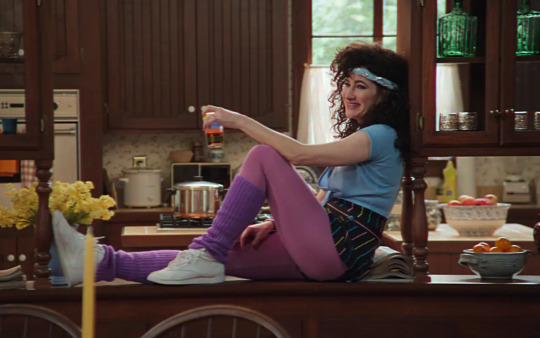
So why would the great and good of Hollywood acting willingly attach themselves to a franchise that one of the greatest directors of all time not so long ago declared to bear a greater resemblance to theme park rides than cinema? Marvel films are delightful but they are also frequently silly (inevitably, in the transition from cartoon comic book drawings to full-sized, three-dimensional adults leaping around on-camera dressed in skin-tight lycra suits and capes, some space for ridicule is opened up).
The studio is fully aware of this, which is why these films are comedies, but that does not make them any more obvious as vehicles for artists interested in rendering psychological depth on-screen. In 2012, Kiwi wunderkind director Taika Watiti told Interview magazine that he was suspicious of the way feature films can often “turn into commodities”. Yet five years later, his own Marvel movie, Thor: Ragnarok, hit cinemas.
The financial incentives to any actor are obvious and no doubt play a part but there is something even more valuable to someone like Benedict Cumberbatch – not exactly strapped-for-cash following Sherlock, The Imitation Game, and The Hobbit films – inextricably wound-up with those mega pay packages. That something is audience size. Avengers: Endgame, the highest-grossing film of all time until Avatar’s re-release in China in March last year, took $357 million at the domestic box office on its opening weekend.
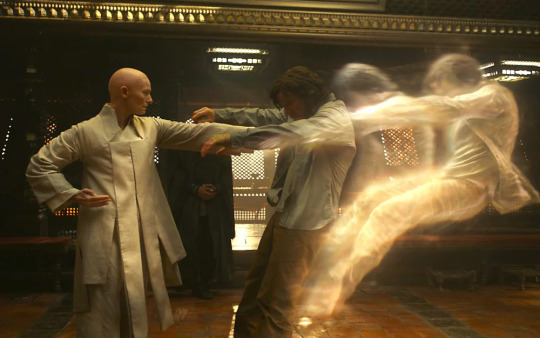
In America, the average price of a cinema ticket that year was about $9 – that means, by the roughest of calculations, that within 48 hours of the film’s release, 12% of the population, or some 40 million people, had seen the film. An actress like Colman has not exactly been confined to niche audiences – The Crown is not a small show – but even so, the prospect of such unparalleled exposure must be seductive.
The dream of a Marvel movie has not replaced the dream of an Oscar – it all but guarantees it. A symbiotic relationship is emerging between the franchise and the Academy, as the popular reach of one feeds and is elevated by the prestige of the other. There is no better example of this than the tragically-curtailed career of the late Chadwick Boseman.
From a handful of critically-lauded but quietly received biopics (42, Get on Up), he was propelled overnight to global stardom by his MCU roles as Black Panther, Marvel’s first black superhero, culminating in the Black Panther film in 2018. Now, just months after his death from cancer, he is a shoo-in to win a Best Actor award this week for his role in Ma Rainey’s Black Bottom. The opposite of a Marvel film in almost every sense – it’s claustrophobic, literary (it’s based on an August Wilson play), and tragic – it was Black Panther nonetheless that secured him the part.
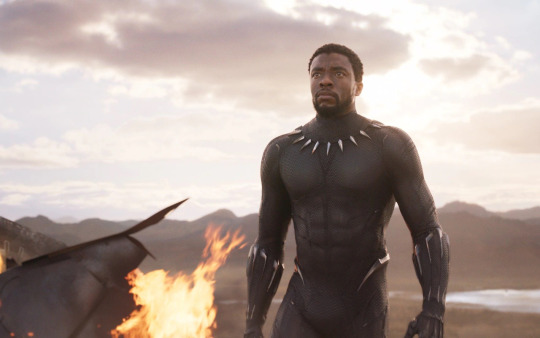
This give-and-take between superhero flicks and prestige dramas extends beyond actors: Watiti, who has just wrapped shooting on another Thor film, was nominated for an Oscar in 2019 for his German Resistance drama Jojo Rabbit, while Chloé Zhao, who is sure to win Best Director this weekend for Nomadland, has just wrapped her own Marvel movie, Eternals, which is slated for release in November.
Kathryn Hahn, meanwhile, was brought into WandaVision by director Matt Shakman, better known for directing prestige shows like Mad Men and Succession. His vision, in collaboration with the writer Jac Schaeffer, led to a formally wildly innovative show, providing the opportunity for Hahn and the show’s pair of stars Elizabeth Olsen and Paul Bettany – both outstanding actors – to flex their comic and creative muscles. Such starpower behind the camera is itself an attraction for actors of Colman’s calibre, and while there is as yet no word on who will direct Secret Invasion, there are many exciting possible names in the mix.
A few powerhouse industry figures were instrumental in fostering this mutually-beneficial relationship. The first was Robert Downey Jr, the original posterboy of the franchise. When he agreed to star in the first film, 2008’s Iron Man, it was a huge gamble – director Jon Favreau had to battle the studio to accept him – as he emerged from a wilderness decade marred by drug addiction, but it was also a huge coup. Downey Jr had just been nominated for an Oscar for Ben Stiller’s comedy Tropic Thunder and had recently starred in David Fincher’s instant cult-classic Zodiac; his personal reputation may have been in tatters, but as a serious actor, he brought chops.
His Iron Man would become the emotional and dramatic heart of the franchise over its next three phases. Kenneth Branagh, who directed the 2011 film Thor, also bridged the gap between the big flashy studio and his own thespy circle: he brought his protégé Tom Hiddleston, who at that point was best known for his British TV and theatre work, onboard to play Loki, a decision that Feige apparently described as the most important the studio would ever make. Hiddleston capitalised on rather than abandoned his roots: he approached the character like “a comic book version of Edmund in King Lear, but nastier.” It paid off: Hiddleston is a global superstar, frequently touted as the next James Bond, and his dedicated Loki spin-off show is the Marvel TV release of the summer.
Of course, there’s one thing that Marvel offers its actors that money simply can’t buy: a bit of fun. “If my actors aren’t having a good time on set, then I’m doing something wrong,” Waititi told Polygon in 2016. Reflecting on her playfully heightened performance in the early episodes of WandaVision in a recent interview with the New York Times, Hahn said that her husband said her performance had reminded him of her younger self in her college days. “I haven’t seen that part of you in so long – just you, hamboning it,” he told her. Colman, who is by all accounts is a mischievous on a film set, may simply want to bust out of those period costumes, slip into a bodysuit, and have a good time.
#Olivia Colman#Tom Hiddleston#Kathryn Hahn#Elizabeth Olsen#Paul Bettany#Robert Downey Jr.#Mark Ruffalo#Scarlett Johansson#Taika Waititi#Chris Evans#julia louis-dreyfus#Chadwick Boseman#Anthony Hopkins#Benedict Cumberbatch#Tilda Swinton#Brie Larson#Chloe Zhao#Ben Mendelsohn#Annette Bening#MCU#Kevin Feige
99 notes
·
View notes
Text
What’s so Funny About Vengeance, the Night, and Batman? – Two Superhero Parodies in Conversation

Back in 2016, the first trailers for Director Chris McKay’s The Lego Batman Movie hit. A spinoff of the take on the iconic hero, voiced by Will Arnett, from 2014’s The Lego Movie. Those trailers spelled out a plot covering how Batman’s life of crimefighting is turned upside down when Robin unexpectedly enters the picture. It was a funny trailer, promising another insightful comedy from the crew behind The Lego Movie. A promise it handily delivered on when it came out in February 2017 with an animated feature steeped wall-to-wall jokes for the sake of mocking Bruce Wayne’s angst filled crusade that can only come from understanding what’s made the character withstand the test of time.
But there was a thought I and others had from seeing that trailer up to watching the actual movie:
“This seems… familiar.”
Holy Musical B@man! is a 2012 fan-made stage production parody of DC Comics’ biggest cash cow. It was produced as the fifth musical from YouTube-based cult phenomenon Starkid Productions, from a book by Matt and Nick Lang, music by Nick Gage and Scott Lamp with lyrics by Gage. The story of the musical details how Robin’s unexpected entrance ends up turning Batman’s (Joe Walker) life of crimefighting upside down. Among Starkids’ fandom derived projects in their early existence, as they’ve mainly moved on to well-received original material in recent years, Holy Musical B@man! is my personal favorite. I go back to it frequently, appreciating it as a fan of both superheroes and musicals. (Especially since good material that touches on both of those isn’t exactly easy to come by. Right, Spider-Man?)
While I glibly summarized the similarities between them by oversimplifying their plots, there’s a lot in the details, both major and minor, that separates how they explore themes like solitude, friendship, love, and what superhero stories mean. It’s something I’ve wanted to dig into for a while and I found a lot in both of them I hadn’t considered before by putting them in conversation. I definitely recommend watching both of them, because of how in-depth this piece goes including discussing their endings. However, nothing I can say will replace the experience of watching them and if I had included everything I could’ve commented on in both of them, this already massive piece would easily be twice as long minimum.
Up front, I want to say this isn’t about comparing The Lego Batman Movie and Holy Musical B@man in terms of quality. Not only are they shaped for vastly different mediums with different needs/expectations, animation versus stagecraft, but they also had different resources at their disposal. Even if both are in some ways riffing on the aesthetic of the 1990s Batman movies and the Adam West TV show, Lego Batman does it with the ability to make gorgeously animated frames packed to the brim with detail while Holy Musical often leans into its low-fi aesthetic of characters miming props and sets to add extra humor. They’re also for different audiences, Lego Batman clearly for all-ages while Holy Musical has the characters cursing for emphasis on a regular basis. On top of those factors, after picking through each of these for everything worth commenting on that I could find, I can’t say which I wholly prefer thanks in part to these fundamental differences.
This piece is more about digging through the details to explore the commonalities, differences, and what makes them effective mocking love letters to one of the biggest superheroes in existence.
(Also, since I’m going to be using the word “Batman” a lot, I’ll be calling Lego Batman just “Batman” and referring to the version from Holy Musical as “B@man”, with the exception of quoted dialogue.)
[Full Piece Under the Cut]
Setting the Tone
The beginning is, in fact, a very good place to start when discussing how these parodies frame their versions of the caped crusader. Each one uses a song about lavishing their respective Batmen with praise about how they are the best superheroes ever and play over sequences of the title hero kicking wholesale ass. A key distinction comes in who’s singing each song. Holy Musical B@man’s self-titled opening number is sung from the perspective of an omniscient narrator recounting B@man’s origin and later a chorus made up of the Gotham citizenry. Meanwhile, “Who’s the (Bat) Man” from Lego Batman is a brag-tacular song written by Batman about himself, even playing diegetically for all his villains to hear as he beats them up.
youtube
Holy Musical opens on a quick recap of Batman’s origin:
“One shot,
Two shots in the night and they’re gone
And he’s all left alone
He’s just one boy
Two dead at his feet and their blood stains the street
And there’s nothing, no there’s nothing he can do!”
We then get a Bat-dance break as the music goes from slow and moody to energetic to reflect Batman turning that tragedy into the driving force behind his one-man war on crime. Assured by the narrator that he’s “the baddest man that there’s ever been!” and “Now there’s nothing, no there’s nothing he can’t do!” flipping the last lyric of the first verse. For the rest of the opening scene the lyrics matter less than what’s happening to establish both this fan-parody’s version of Batman and how the people of Gotham (“he’ll never refuse ‘em”) view him.
Lego Batman skips the origin recap, and in general talks around the death of the Waynes to keep the light tone going since it’s still a kids movie about a popular toy even if there are deeper themes at play. Instead, it continues a trend The Lego Movie began for this version of the character writing music about how he’s an edgy, dark, awesome, cool guy. While that movie kept it to Batman angry-whiteboy-rapping about “Darkness! NO PARENTS!”, this one expands to more elaborate boasts in the song “Who’s the (Bat) Man” by Patrick Stump:
youtube
“In the darkest night
I make the bad guys fall
There’s a million heroes
But I’m the best of them all!”
Batman singing this song about himself, as opposed to having it sung by others aims the crosshairs of parody squarely on the hero’s ego. His abilities make fighting his villains effortless, like this opening battle is more an opportunity to perform the song than a life-or-death struggle. Even Joker’s aware of that as he shouts, “Stop him before he starts singing!” This Batman doesn’t see himself as missing out on anything in life, even if he still feels that deep down. Being Batman is the coolest thing in the world that anyone would envy. He’s Batman, therefore everyone should envy him.
The songs aren’t only part of the equation for how these two works’ opening scenes establish their leading hero. While both songs are about Batman being cool, they’re separated by the accompanying scenes. Lego Batman keep the opening within the Joker’s perspective until Batman shows up and the action kicks in. Once it does, we’re shown a Batman at the top of his solo-hero game. Meanwhile, Holy Musical’s opening is about B@man building his reputation and by the end of the song he has all the citizens of Gotham singing his praises with the titular lyrics. Both are about being in awe of the title hero, one framed by Joker’s frustration at Batman’s ease in foiling his schemes yet again and the other about the people of Gotham growing to love their city’s hero (probably against their better judgement.)
That’s woven into the fabric of what kind of schemes Batman is foiling in each of these. Joker’s plan to bomb Gotham with the help of every supervillain in Batman’s Rogues Gallery is hilariously high stakes and the type of plan most Batman stories, even parodies, would save for the climax. Neatly exemplified by how that’s almost the exact structure of Holy Musical’s final showdown. Starting with these stakes works as an extension of this Batman’s nature as a living children’s toy and therefore the embodiment of a child’s idea of what makes Batman cool, his ability to wipe the floor with anyone that gets in his way “because he’s Batman.” It also emphasizes Joker as the only member of the Rogues Gallery that matters to Lego Batman’s story, every other Bat-villain is either a purely visual cameo or only gets a couple lines maximum.
The crime’s being stopped by B@man are more in the “Year One” gangster/organized crime category rather than anything spectacle heavy. Though said crimes are comically exaggerated:
Gangster 1: Take these here drugs, put ‘em into them there guns, and then hand ‘em out to those gamblin’ prostitutes!
Gangster 2: Should we really be doing these illegal activities? In a children’s hospital for orphans?
These fit into that model of crime the Dark Knight fights in his early days and add tiny humanizing moments between the crooks (“Oh, Matches! You make me laugh like nobody else!”) in turn making the arrival of B@man and the violence he deals out a stronger punchline. Further emphasized by the hero calling out the exact physical damage he does with each hit before warning them to never do crime again saying, “Support your families like the rest of us! Be born billionaires!” Later in the song his techniques get more extreme and violence more indiscriminate, as he uses his Bat-plane to patrol and gun down whoever he sees as a criminal, including a storeowner accidentally taking a single dollar from his own register. (“God’s not up here! Only Batman!”)
A commonality between these two openings is how Commissioner Jim Gordon gets portrayed. Both are hapless goofs at their core, playing more on the portrayal of the character in the 60s TV show and 90s Burton/Schumacher movies than the serious-minded character present in comics, Nolan’s Dark Knight Trilogy, and other adaptations. Lauren Lopez’s portrayal in Holy Musical gets overwhelmed by everything thrown at him, eventually giving up and getting out of B@man’s way (“I’m not gonna tell Batman what to do! He’s Batman!”) Hector Elizondo’s Gordon in Lego Batman clearly reached the “stay out of Batman’s way” point a long time ago, happy to have “the guy who flips on the Bat-signal” be his sole defining trait. While the characterizations are close, their roles do end up differing. Lopez’s Gordon sticks around to have a few more comedic scenes as the play goes on, where Elizondo’s exist to set up a contrast with his daughter Barbara and her way of approaching Batman when she becomes Police Commissioner.
These opening sequences both end in similar manners as well; the citizens of Gotham lavishing praise on their respective Batmen and a confrontation between Batman and the Joker. Praise from the citizenry in Holy Musical comes on the heels of a letter from B@man read out on the news about how much they and the city of Gotham suck. They praise B@man for his angsty nature as a “dark hero” and how they “wouldn’t want him any other way!”, establishing the motif of Gotham’s citizens in Holy Musical as stand-ins for the Batman fandom. Lego Batman uses the praise of the Gotham citizens after Batman’s victory in the opening scene as a lead in to contrast their certainty that Batman must have an exciting private life with the reality we’re shown. Which makes sense since Lego-Batman’s relationship to the people of Gotham is never presented as something at stake.
Greater contrast comes in how the confrontations with the Joker are handled, Lego Batman has an argument between the hero and villain that’s intentionally coded as relationship drama, Batman saying “There is no ‘us’” when Joker declares himself Batman’s greatest enemy. The confrontation in Holy Musical gets purposefully underplayed as an offstage encounter narrated to the audience as a Vicki Vale news report. This takes Joker off the board for the rest of the play in contrast to the Batman/Joker relationship drama that forms one of Lego Batman’s key pillars. While they take different forms, the respective citizenry praise and villain confrontation parts of these openings lead directly into the number one common thematic element between these Bat-parodies: Batman’s loneliness.
One is the Darkest, Saddest, Loneliest Number
Batman as an isolated hero forms one of the core tenants of the most popular understanding of the character. Each of these parodies picks at that beyond the broody posturing. There’s no dedicated segment in this piece about how these works’ versions of the title character function bleeds into every other aspect of them, but each starts from the idea of Batman as a man-child with trouble communicating his emotions. Time’s taken to give the audience a view of where their attitudes have left them early in the story.
Both heroes show their loneliness through interactions with their respective Alfreds. Holy Musical has the stalwart butler, played by Chris Allen, try to comfort B@man by asking if he has any friends he enjoys being around. When B@man cites Lucius Fox as a friend he calls him right away, only to discover Lucius Fox is Alfred’s true identity and Alfred Pennyworth was an elaborate ruse he came up with to protect Bruce on his father’s wishes. Ironically, finding out his closest friend was living a double life causes Bruce to push Alfred away (the play keeps referring to him as Alfred after this, so that’s what I’m going to do as well.) After he’s fired he immediately comes back in a new disguise as “O’Malley the Irish Butler” (same outfit he wore before but with a Party City Leprechaun hat.) That’s unfortunately the start of a running gag in Holy Musical that ends up at the worst joke in the play, when Alfred disguises himself as “Quon Li the Chinese Butler” doing an incredibly cringeworthy “substituting L’s for R’s” bit with his voice. It’s been my least favorite bit in the play since I first saw it in 2012 and legitimately makes me hesitate at times to recommend it. Even if it’s relatively small bit and the rest holds ups.

That disclaimer out of the way, that conversation between B@man and Alfred leads into the title hero reflecting on his sadness through the musical’s I Want Song, “Dark, Sad, Lonely Knight.” The song’s split into two halves, the first Alfred reflecting on whether he played a part in Bruce’s current condition and the second B@man longing for a connection. The song does a good job balancing between the sincerity over the hero’s sadness and getting good laughs out of it:
“Think of the children
Next time you gun down the mama and papa
Their only mama and papa
Because they probably don’t have another mama and papa!”
The “I Want” portion of the song coming in the end with the repetition of the lryics “I want to be somebody’s buddy.”
Rather than another song number, Lego Batman covers Batman’s sadness through a pair of montages and visual humor. The first comes after the opening battle, where we see Batman taking off all his costume except for the mask hanging out alone in Wayne Manor, showing how little separation he puts between identities. Compared to Holy Musical where the equivalent scene is the first we see of Bruce without the mask on, which may come down to practicality since anyone who’s worn a mask like that knows they get hot and sweaty fast. Batman is constantly made to appear small among the giant empty rooms of his estate as he eats dinner, jams on his guitar, and watches romantic movies alone.
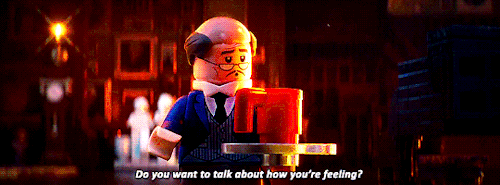
Ralph Fienne’s Alfred coming in at the end of this sequence witnessing Batman looking at a photo of himself as a boy with his parents for the last time. Alfred outlines Batman’s fear of being part of a family again only to be met with Batman denying he has any feelings ever. Pennyworth’s role as a surrogate father gets put into greater focus here than in Holy Musical, as we get glimpses of Alfred reading a book titled “How to Deal with Your Out-of-Control Child.” Also shown in smaller scenes of Alfred dealing with Batman’s insistent terminology for his crime fighting equipment, like calling his cowl an “armored face disguise.”
Batman’s denial of his pain contrasts how B@man wallows in it. Though he’s forced to confront it a little as the Joker’s plan ends up leaving him with no crimefighting to fall back on to ignore his issues. This montage gets set to the song “One” by Harry Nilsson and details Batman, unable to express his true feelings, eventually letting them out in the form of tempter tantrums. There’s also some humor through juxtaposition as Batman walks solemnly through the streets of Gotham City, rendered black and white, as the citizens chant “No more crime!” in celebration, while flipping over cars and firing guns into the air.
A disruption to their loneliness eventually comes in the form of a sensational character find.
Robin – The Son/BFF Wonder
Between both Bat-parodies, the two Robins’ characterizations are as close as anyone’s between them. Each is nominally Dick Grayson but are ultimately more representative of the idea of Robin as the original superhero sidekick and his influence on Batman’s life. The play and movie also both make the obvious jokes about Dick’s name and the classic Robin costume’s lack of pants at different points. Dick’s origin also gets sidestepped in each version to skip ahead to the part where he starts being an influence in Batman’s life.
Robin’s introduction to the comics in Detective Comics #38 in 1940, marking the start of Batman’s literal “Year Two” as a character, predating the introduction of Joker, Catwoman, and Alfred, among others. Making him Batman’s longest lasting ally in the character’s history. His presence and acrobatics shift the tone by adding a dash of swashbuckling to Batman’s adventures, inspired by the character’s namesake Robin Hood, though both parodies take a page out of Batman Forever and associate the name with the bird for the sake of a joke. Robin is as core to Batman as his origin, but more self-serious adaptations (i.e., the mainstream cinematic ones that were happening around the times both Holy Musical and Lego Batman came out) tend to avoid the character’s inclusion. These two works being parody, therefore anything but self-serious, give themselves permission to examine why Robin matters and how different characters react to his presence. Rejection of Robin as a character and concept comes out in some form in each of these works, from Batman himself in Lego Batman and the Gotham citizens in Holy Musical.
The chain of events that lead to Dick becoming Robin in Lego Batman are a string of consequences for Batman’s self-absorption. A scene of Bruce barely listening as Dick asks for advice on getting adopted escalating to absentmindedly signing the adoption paperwork. Batman doesn’t realize he has a son until after his sadness montage. Alfred forces Batman to start interacting with Dick against his will. The broody loner wanting nothing to do with the cheery kid, played to “golly gee gosh” perfection by Michael Cera, until he sees the utility of him. Batman doesn’t even have the idea to give Robin a costume or codename because he clearly views the sidekick’s presence as a temporary measure for breaking into Superman’s fortress, made clear by how he lists “expendable” as a quality Dick needs if he wants to go on a mission.
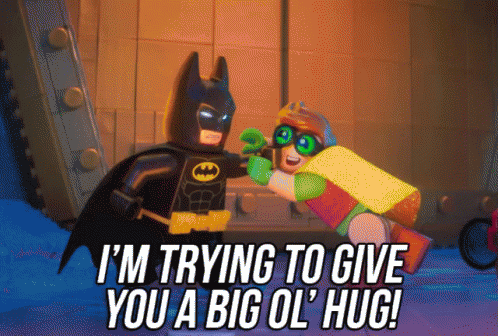
This makes Robin the catalyst for Batman’s shifting perspective throughout Lego Batman. When Robin succeeds in his first mission, the Dark Knight is hesitant to truly compliment him and chalks up his ward’s feats to “unbelievable obeying.” Other moments have Robin’s presence poke holes in Batman’s tough guy demeanor, like the first time Batman and Robin ride in the Bat-mobile together, Robin asks where the seatbelts are and Batman growls “Life doesn’t give you seatbelts!”, only for Batman to make a sudden stop causing Robin to hit his head on the windshield and Batman genuinely apologizes. They share more genuine moments together as the film goes, like Batman suggesting they beatbox together to keeps their spirits up after they’ve been imprisoned for breaking into Arkham Asylum. Robin’s representative of Batman gradually letting people in throughout these moments.
On the exact opposite end of the spectrum, B@man needs zero extra prompting to let Robin into his life. Nick Lang’s Robin (henceforth called “Rob!n” to keep with this arbitrary naming scheme I’ve concocted) does get brought into his life by Alfred thanks to a personal ad (“‘Dog for sale’? No… ‘Orphan for sale’! Even better!”) but it’s a short path to B@man deciding to let Dick fight alongside him. The briefest hesitance on the hero’s part, “To be Batman… is to be alone”, is quelled by Rob!n saying “We could be alone… together.” Their first scene together quickly establishing the absurd sincerity exemplified by this incarnation of the Dynamic Duo. An energy carried directly into the Act 1 closing number, “The Dynamic Duet”, a joyful ode between the heroes about how they’re “Long lost brothers who found each other” sung as they beat up supervillains (and the occasional random civilian.)
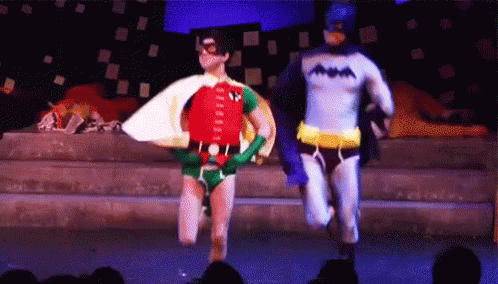
That song also ties into the contrast between the Batman/Robin dynamic and the B@man/Rob!n one. While Holy Musical is portraying a brotherly/BFF bond between the two heroes, Lego Batman leans into the surrogate son angle. While both are mainly about their stories’ Batman being able to connect with others, the son angle of Lego Batman adds an additional layer of “Batman needs to take responsibility for himself and others” and a parallel to Alfred as Batman’s own surrogate father. It also adds to the queer-coding of Batman in Lego Batman as Batman’s excuse to Robin for why he can go on missions is that Bruce and he are sharing custody, Robin even calling Batman’s dual identities “dads” before he knows the truth.
In the absence of the accepting personal responsibility through fatherhood element, the conflict Rob!n brings out in Holy Musical forms between B@man and the citizens of Gotham. “Citizens as stand-ins for fandom” is at it’s clearest here as the Act 2 opener is called “Robin Sucks!” featuring the citizens singing about how… well, you read the title. Their objections to Rob!n’s existence has nothing to do with what the young hero has done or failed to do, but come from arguments purely about the aesthetic of Rob!n fighting alongside B@man. Most blatantly shown by one of the citizens wearing a Heath Ledger Joker t-shirt saying Rob!n’s presence “ruins the gritty realism of a man who fights crime dressed as a bat.” It works as the Act 2 opener by establishing that B@man and the citizens conflicting opinions on his sidekick end up driving that half of the story, exemplified in B@man’s complete confusion about why people hate Rob!n (“Robin ruined Batman? But that’s not true… Robin make Batman happy.”)
Both Robins play into the internal conflict their respective mentors are going through, but what would a superhero story, even a parody, be without some colorful characters to provide that sweet external conflict.
Going Rogue
Both works have the threat comes from an army of villains assembled under a ringleader, Zach Galifianakis’s Joker in Lego Batman and Jeff Blim as Sweet Tooth in Holy Musical. Both lead the full ensemble of Batman’s classic (and not so classic) Rogues at different points. As mentioned before Joker starts Lego Batman with “assemble the Rogues, blow up Gotham” as his plan, while Sweet Tooth with his candy prop comedy becoming the ringleader of Gotham’s villains is a key turning point in Act 1 of the play. Part of this comes down to how their connections to their respective heroes and environments are framed, Sweet Tooth as a new player on the scene and Joker as Batman’s romantic foil.

Lego Batman demonstrates Batman and Joker are on “finishing each other’s sentences” levels of intimate that Batman refuses to acknowledge. Shown best in how Joker’s plan only works because he can predict exactly how Batman will act once he starts playing hard to get. When he surrenders the entire Rogues Gallery (without telling them) and himself to police custody, he describes it as him being “off the market.” He knows Batman won’t settle for things ending on these terms and tricks the hero into stealing Superman’s Phantom Zone projector so he can recruit a new, better team of villains for a take two of his masterplan from the start. Going through all this trouble to get Batman to say those three magic words; “I love hate you.” Joker as the significant other wanting his partner to finally reciprocate his feelings and commit works both as a play on how the Batman/Joker relationship often gets approached and an extension of the central theme. Batman is so closed off to interpersonal connections he can’t even properly hate his villains.
Sweet Tooth, while clearly being a riff Heath Ledger and Caesar Romero’s Jokers fused with a dash of Willy Wonka, doesn’t have that kind of connection with B@man. Though there are hints that B@man and his recently deceased Joker may have had one on that level. He laments “[Joker]’s in heaven with mom and dad. Making them laugh, I know it!” when recalling how the Clown Prince of Crime was the one person he enjoyed being around. This makes Joker’s death one of the key triggers to B@man reflecting on his solitude at the start of the play.

What Sweet Tooth provides the story is a threat to B@man’s new bond with Rob!n. Disrupting that connection forms the delicious center of the Candy King of Crime’s plan in Act 2. He holds Rob!n and Gotham’s people hostage and asks the citizens to decide via Facebook poll if the sidekick lives or dies (in reference to the infamous phone hotline vote from the comic book story A Death in the Family where readers could decide the Jason Todd Robin’s fate.)
With the rest of the villains under the leadership of the respective works’ main antagonists, there’s commentary on their perceived quality as threats. When Holy Musical has Superman talking to Green Lantern about how much B@man’s popularity frustrates him, he comes down especially hard on the Caped Crusader’s villains. Talking about how they all coast by on simple gimmicks with especially harsh attention given to Two Face’s being “the number two.” Saying they’re only famous because B@man screws up and they get to do more damage. Which he compares to his own relationship with his villains:
Superman: You ever heard of Mr. Mxyzptlk?
Green Lantern: No.
Superman: No, that’s right! That’s because I do my job!
Lego Batman has commentary on the other villains come from Joker, recognizing that even all together they can never beat Batman, because that’s how a Batman story goes. The other villains get portrayed as generally buffoonish, struggling to even build a couch together and described by Joker as “losers dressed in cosplay.” Tricking Batman into sending him to the Phantom Zone provides him the opportunity to gather villains from outside Batman’s mythos and outside DC Comics in general. Recruiting the likes of Sauron, King Kong, Daleks, Agent Smith from The Matrix, and the Wicked Witch of the West, among others. When I first saw and reviewed The Lego Batman Movie, this bugged me because it felt like a missed opportunity to feature lesser-known villains from other DC heroes’ Rogues Galleries. Now, considering the whole movie as meta-commentary on the status of this Batman as a children’s toy, it makes perfect sense that Joker would need to go outside of comics to break the rules of a typical Batman story and have a shot at winning.
The Rogues of Holy Musical get slightly more of a chance to shine, if only because their song “Rogues are We” is one of the catchier tracks from the play. They’re all still more cameo than character when all’s said and done, but Sweet Tooth entering the picture is about him recognizing their potential to operate as a unit, takeover Gotham, and kill B@man. The candy-pun flinging villain wants all of them together, no matter their perceived quality.
Sweet Tooth: “We need every villain in Gotham. Cool themes, lame themes, themes that don’t match their powers, even the villains that take their names from public domain stories.” (Two Face’s “broke ass” still being the exception.)
Both Joker and Sweet Tooth provide extensions of the shared theme of Batman dealing with the new connections in his life, especially with regards to Robin. However, Robin isn’t the only other ally (or potential ally) these Dark Knights have on their side.
Super Friends(?)
The internal crisis of these Caped Crusaders come as much from how they react to other heroic figures as it does from supervillainous machinations. In both cases how Batman views and is viewed by fellow heroes gets centered on a specific figure, Superman in Holy Musical and Commissioner Barbara Gordon (later Batgirl) in Lego Batman. Each serves a vastly different purpose in the larger picture of their stories and relationship to their respective Batmen. Superman reflecting B@man’s loneliness and Barbara symbolizing a new path forward for Batman’s hero work.
Superman’s role in Holy Musical runs more parallel to Lego Batman’s Joker than Barbara. Brian Holden’s performance as the Man of Tomorrow plays into a projected confidence covering anxiety that nobody likes him. Besting the Bat-plane in a race during B@man’s Key to the City ceremony establishes a one upmanship between the two heroes, like Joker’s description of his relationship with Batman at the end of Lego Batman’s opening battle. Though instead of that romantically coded relationship from Lego Batman, this relationship is more connected to childish jealousy. (But if you do want to read the former into Holy Musical B@man, neither hero has an onstage relationship with any woman and part of their eventual fight consist of spanking each other.)
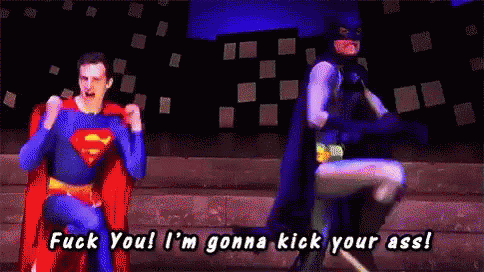
B@man and Superman’s first real interaction is arguing over who’s the cooler hero until it degrades into yelling “Fuck you!” at each other. B@man storming off in the aftermath of that gets topped off by Superman suggesting he should get the Key to the City instead, citing his strength and longer tenure as a hero (“The first hero, by the way”) as justifications. This only results in the Gotham citizens turning on him for suggesting their city’s hero is anything less than the best, which serves both as a Sam Raimi Spider-Man reference (“You mess with one of us! You mess with all of us!”) and another example of the citizens as stand-ins for fandom. Superman’s veil of cocksureness comes off quickly after that and stays off for the rest of the play. Starting with his conversation with Green Lantern where a civilian comes across them, but barely acts like Superman’s there.
One of the play’s running gags is Superman calling B@man’s number and leaving messages, showing a desperation to reach out and connect with his fellow hero despite initial smugness. Even before the first phone call scene, we see Superman joining B@man to sing “I want to be somebody’s buddy” during “Dark, Sad, Lonely Knight” hinting at what’s to come. The note it consistently comes back to is that Superman’s jealousy stems from Batman’s popularity over him. This is a complete flip of what Lego Batman does with the glimpse at a Batman/Superman dynamic we see when Batman goes to the Superman’s fortress to steal the Phantom Zone projector. The rivalry dynamic there exists solely in Batman’s head, Lego-Superman quickly saying “I would crush you” when Batman suggests the idea of them fighting. Superman’s status among the other DC heroes is also night and day between these works. Where Lego-Superman’s only scene in the movie shows him hosting the Justice League Anniversary Party and explaining he “forgot” to invite Batman, Superman in Holy Musical consistently lies about having friends over (“All night long I’m busy partying with my friends at the Fortress… of Solitude.”)
Superman’s relationship to B@man in Holy Musical develops into larger antagonism thanks to lack of communication with B@man brushing off Supes’ invitations to hang out and fight bad guys (“Where were you for the Solomon Grundy thing? Ended up smaller than I thought, just a couple of cool guys. Me and… Solomon Grundy.”) His own loneliness gets put into stronger focus when he sees the news of Rob!n’s debut as a crimefighter, which makes him reflect on how he misses having Krypto the Super-Dog around. (The explanation for why he doesn’t have his dog anymore is one of my favorite jokes in the play and I won’t ruin it here.)
Where Superman’s a reflection of B@man’s loneliness, Rosario Dawson as Barbara in Lego Batman is a confrontation of Batman’s go it alone attitude. Her job in the story is to be the one poking holes in the foundation of Batman as an idea, starting with her speech at Jim Gordon’s retirement banquet and her instatement as commissioner. She has a by-the-book outlook on crimefighting with the omnicompetence to back it up, thanks to her training at “Harvard for Police.” Babs sees Batman’s current way of operating as ineffectual and wants him to be an official agent of the law. An idea that dumps a bucket of cold water on Batman’s crush he developed immediately upon seeing her, though that never fully goes away.

Her main point is that Batman “karate chopping poor people” hasn’t made Gotham better in his 80 years of operating. A contrast to Holy Musical’s Jim Gordon announcing that B@man has brought Gotham’s crime rates to an all-time low (“Still the highest in the world, but we’re working on it.”) She wants to see a Batman willing to work with other people. A hope dashed constantly dealing with his childish stubbornness as he tries to foil Joker’s schemes on his own, culminating in her arresting Batman and Robin for breaking into Arkham to send Joker to the Phantom Zone.
Barbara’s role as the one bringing grown-up attitudes and reality into Batman’s world does leave her in the role of comedic straight woman. Humor in her scenes comes from how she reacts to everyone else’s absurdity rather than anything she does to be funny. This works for the role she plays in Lego Batman, since she’s not there to have an arc the way Superman does in Holy Musical. She’s another catalyst for Batman’s to start letting people in as another character he grows to care about. Which starts after she lets the Dynamic Duo out of prison to fight Joker’s new army of Phantom Zone villains on the condition that he plays it by her rules. Leading to a stronger bond between Batman, Robin, Alfred, and her as they start working together.
The two Batmen’s relationships to other heroes, their villains, Robin, and their own solitude each culminate in their own way as their stories reach their conclusions.
Dark Knights & Dawning Realizations
As everything comes down to the final showdowns in these Bat-parodies, the two Caped Crusaders each confront their failures to be there for others and allow themselves to be vulnerable to someone they’ve been antagonizing throughout the story. Each climax has all of Gotham threatened by a bomb and the main villains’ plans coming to fruition only to come undone.
Holy Musical has Sweet Tooth’s kidnapping of Rob!n and forcing Gotham to choose themselves or the sidekick they hate sends B@man into his most exaggerated state in the entire play. It’s the classic superhero movie climax conundrum, duty as a hero versus personal attachment. Alfred, having revealed himself as the “other butlers”, even lampshades how these stories usually go only for that possibility to get shot down by Bruce:
Alfred: A true hero, Master Wayne, finds a way to choose both.
B@man: You’re right, Alfred. I know what I have to do… Fuck Gotham, I’m saving Robin!
B@man’s selfishness effectively makes him the real villain of Holy Musical’s second act. Lego Batman has shades of that aspect as well, where Batman gets sent to the Phantom Zone by Joker for his repeated refusal to acknowledge their relationship. Where the AI running the interdimensional prison, Phyllis voiced by Ellie Kemper, confronts him with the way he’s treated Robin, Alfred, Barbara, and even Joker:
Phyllis: You’re not a traditional bad guy, but you’re not exactly a good guy either. You even abandoned your friends.
Batman: No! I was trying to protect them!
Phyllis: By pushing them away?
Batman: Well… yeah.
Phyllis: Are they really the ones you’re protecting?
Batman watches what’s happening back in Gotham and sees Robin emulate his grim and gritty tendencies to save the day in his absence makes him desperately scream, “Don’t do what I would do!” It’s the universe rubbing what a jerk he’s been in his face. He’s forced to take a look at himself and make a change. B@man’s not made to do that kind of self-reflection until after he’s defeated Sweet Tooth but failed to stop the villain’s bomb. He’s ready to give up on Gotham forever and leave with Rob!n, until his sidekick pulls up Sweet Tooth’s poll and it shows the unanimous result in favor of saving the Boy Wonder. Despite everything they said at the start of Act 2, the people want to help their hero in return for all the times he helped them. All of them calling back to the Raimi Spider-Man reference from Act 1, “You mess with one of us. You mess with all of us.”
Both heroes’ chance at redemption and self-improvement comes from opening themselves up to the people they pushed out and dismissed earlier in their stories. Batman takes on the role he reduced the Commissioner down to at the beginning of the movie and flips on signals for Barbara, Alfred, and Robin to show how he’s truly prepared to work as a team, not just with his friends and family but with the villains of Gotham the Joker pushed aside as well. Teamwork makes the dream work and they’re all able to work together to get Joker’s army back into the Phantom Zone but like in Holy Musical they fail to stop the bomb threatening Gotham. Which he can only prevent from destroying the city by confessing his true feeling to Joker
Batman: If it wasn’t for you, I wouldn’t have learned how connected I am with all of these people and you. So, if you help me save Gotham, you’ll help me save us.
Joker: You just said “us?”
Batman: Yeah, Batman and the Joker. So, what do you say?
Joker: You had me at “shut up!”
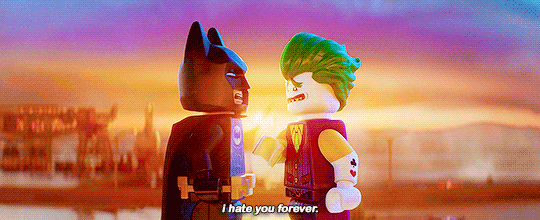
The equivalent moment from Holy Musical comes from B@man needing to put aside his pride and encourage a disheartened Superman to save Gotham for him. This happens in the aftermath of a fight the two heroes had where Superman tried to stop B@man before he faced Sweet Tooth, B@man winning out through use of kryptonite. That fight doesn’t fit into any direct parallel with Lego Batman, but it is important context for how Superman’s feeling about B@man before Superman finally gets his long-awaited phone call from the Dark Knight. Also, the song accompanying the fight, “To Be a Man”, is one of the funniest scenes in the play. What this speech from B@man does is bring the idea of Holy Musical B@man as a commentary on fandom full circle:
B@man: I forgot what it means to be a superhero. But we’re really not that different, you and me, at our heart. I mean really all superheroes are pretty much the same… Something bad happened to us once when we were young, so we dedicated our whole lives to doing a little bit of good. That’s why we got into this crazy superhero business. Not to be the most popular, or even the most powerful. Because if that were the case, hell, you’d have the rest of us put out of a job!
This speech extends into an exchange between the heroes about how superheroes are cool, not despite anything superficially silly but because of it. Bringing it back to the “Robin Sucks!” theme that started Act 2, saying “Some people think Robin is stupid. But those people are pretentious douchebags. Because, literally, the only difference between Robin and me is our costumes.” The speech culminates in what I genuinely think is one of the best Batman lines ever written, as B@man’s final plea to Superman is “Where’s that man who’s faster than a gun?” calling back to the trauma that created Batman across all versions and what he can see in someone like Superman. So, B@man sacrificing his pride and fully trusting in another hero saves Gotham, the way Batman letting Joker know what their relationship means to him did in Lego Batman.
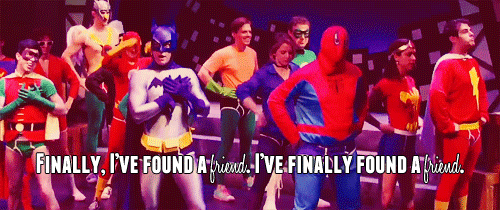
Each of these parodies ends by delivering a Batman willing to open himself up to a new team of heroes fighting at his side, the newly minted Bat-Family in Lego Batman and the league for justice known as the Super Friends in Holy Musical. Putting them side by side like this shows how creators don’t need the resources of a Hollywood studio to make something exactly as meaningful and how the best parodies come from love of the material no matter who’s behind them.
If you like what you’ve read here, please like/reblog or share elsewhere online, follow me on Twitter (@WC_WIT), and consider throwing some support my way at either Ko-Fi.com or Patreon.com at the extension “/witswriting”
#batman#holy musical b@man#the lego batman movie#wit's writing#movie review#misc writing#musicals#animation#starkid#team starkid#starkid productions#superhero movies#robin#joker#dc comics#comics#chris mckay#matt lang#nick lang#joe walker#will arnett#michael cera#superheroes#superhero animation
108 notes
·
View notes
Text
Emblem Of A Better Germany?
In 2014, at the 14th Venice Architecture Biennial, Alex Lehnerer and Savvas Ciriacidis placed the armoured limousine once used by then Federal Chancellor Helmut Kohl in front of the German Pavilion.

Read also “The Invisible Church”, “What Fundamentals? Revisiting Treasures in Disguise: The Ominous Ruins of Montenegrin Modernism” and “The Greek Experiment”
It was a black Mercedes-Benz car with its famous star that added the air of a different era, the Federal Republic of Germany before the fall of the Wall, when its capital was Bonn on the Rhine River in West Germany, and not Berlin. Placed before the steps of the monumental façade of the German pavilion, once build as the Bavarian pavilion and then decisively altered by Nazi Germany in 1938, every German visitor would read this car as a sign, an emblem of what came to be known as “Made in Germany”, high quality cars, machines, and other industrial goods that were seen as responsible for the so-called “Wirtschaftswunder” (economic miracle) after WWII, the economic rebuilding of West Germany.

On the one hand, this car is a desirable object, vintage and expensive. In my family, you knew you had made it when you could afford a Mercedes-Benz. You could tell, when my parents bought their first Mercedes-Benz, they were full of pride. And they still drive the same car and feel the same way about it, although now it’s a rather old car.

On the other hand, you could also read the continuities of 20th century German history into this juxtaposition of car and pavilion. Because what is the link between the Nazi façade and the later car? You might answer this question with the seamless integration of Nazis in German politics and business and the financial gains of many German companies (including Daimler-Benz) during the Nazi period thanks to forced labor, expropriation, and simple opportunism. The juxtaposition places you, at least as a German, between guilt and pride, haunting memories and desire.
Adjacent to the left of the big front door of the German pavilion in Venice, the visitor was greeted by an elegant section of a roof jutting out above a much smaller door. It was a hint that the interior of the pavilion was taken over by another structure, a partial replica of the former Chancellor’s residence in the former capital of the country formerly known as West Germany. A somewhat nostalgic remnant of a bygone past, a country and political system that were fundamentally altered by the fall of the Berlin Wall and the reunification of Germany. It was the Germany I was born into, with Bonn being the capital until 1999 and the Chancellor’s residence – or Kanzlerbungalow (‘Chancellor’s bungalow’) – constantly in the news. As much as it was nostalgic, Lehnerer and Ciriacidis’ pavilion had an uncanny feeling to it. Inside and outside were suddenly called into question, different times collapsed into each other, with the democratic bungalow inserted into the Nazi pavilion. Or was the story told more complex than that, as with the car parked in front of the pavilion? The story was, for sure, one about architectural representation.

The Chancellor’s bungalow was built in 1964 by the architect Sep Ruf for Ludwig Erhard, the second Chancellor of West Germany. Erhard was the German politician who stood like no other for the ‘economic miracle’ of West Germany after WWII. As the Federal Minister of Economic Affairs under Chancellor Konrad Adenauer from 1949 until 1963, when he became Chancellor himself for three rather unlucky years, he promoted what he termed the social market economy and gained widespread popularity with this economic concept. Although Erhard worked for the German state as an economist during the war, he rejected Nazism and was in contact with members of German resistance groups. It seems fitting therefore that as Chancellor he hired the fellow Bavarian Sep Ruf to design the new Chancellors residence in Bonn. Ruf was known for his functional designs in the tradition of the Bauhaus and older modern architects, who had mostly emigrated during the 1930s, like Ludwig Mies van der Rohe. Ruf’s elegant bungalow in Bonn payed homage to designs of the Bauhaus and Mies in particular. The latter’s Barcelona Pavilion, the German Pavilion at the 1929 International Exposition in Barcelona, has often been mentioned as a reference.

Dining room of the bungalow of the Chancellor in Bonn.
By 1964, Ruf had already worked for the federal government several times. Together with another modernist architect of the postwar period, Egon Eiermann, he had for example built the German pavilion for the world fair in Brussels in 1958. He was, thus, well informed about West Germany’s representational needs. The Chancellor’s bungalow spoke not only of the Bauhaus and the better, modern Germany that was supposed to be represented by buildings in its tradition like those of Ruf, Eiermann and others, but it also established a clear link to modern architecture internationally. Looking at the bungalow, some might be reminded of the famous Case Study Houses at the West Coast of the USA. After all, it was the declared aim of West German politicians to make the Federal Republic part of the Western political sphere (‘Westbindung’, or policy of the alignment with the West). I would guess that these two aspects, the tradition of a better, modern Germany and the alignment with the West, were first and foremost represented by Ruf’s bungalow in Bonn.
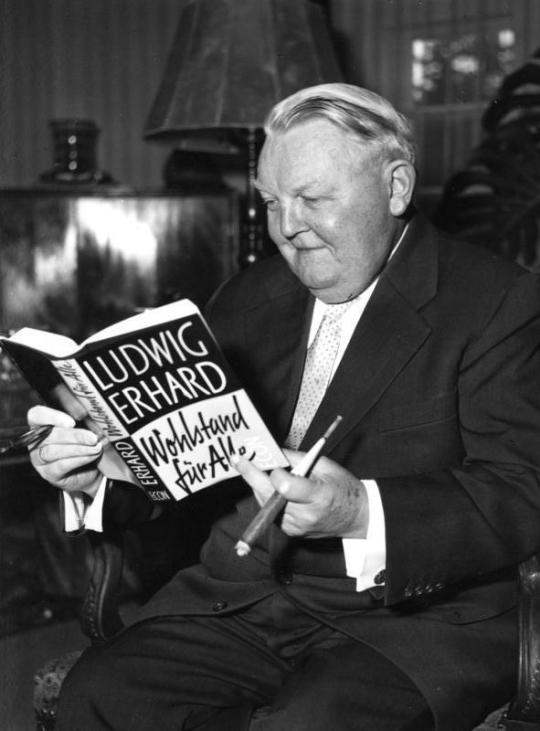
The second Chancellor of Germany, Ludwig Erhard.
The third Chancellor, Kurt Georg Kiesinger, took over from Ludwig Erhard in 1966. He was a former member of the NSDAP and disliked the Chancellor’s bungalow for its functional, ‘cold’ design. He had many things altered before he moved in and brought with him antique furniture pieces in stark contrast with Ruf’s modern architecture. Most of the other Chancellor’s after him agreed with Kiesinger’s view on their official residence. They were looking for something more comfortable and cosy (gemütlich). Under Chancellor Helmut Kohl the interiors had changed so fundamentally that it was hard to still see Ruf’s designs behind thick layers of carpet and bulky sofas and chairs. Not to speak of the new 1980s glittery lighting. Although partly preserved in the original building in Bonn, these alterations, additions and layers were not present in Venice.
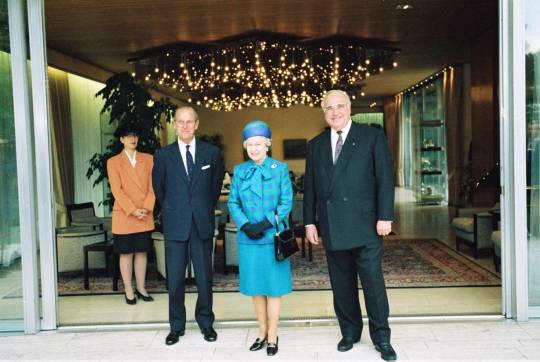
Prince Philip, Queen Elizabeth II and the ex-Chancellor of Germany Helmut Kohl front of the bungalow of the Chancellor in Bonn.
It was a clearer picture or juxtaposition that Lehnerer and Ciriacidis drew. Only the brief blaze of fire in the Chancellor’s fireplace could have been something of a reminiscence to the other, the not-so-modern, not-so-open, cosy Germany that gathered around home-and-hearth. The Germany I grew up in. Just like the Mercedes-Benz, a fireplace was something quite desirable for the generation of my parents. You had to have one. And now, decades later, my parents even installed a new one. As if you couldn’t or wouldn’t want to live without it. Herman Miller’s Eames Collection that Erhard chose for his initial version of the bungalow at the River Rhine might have always been too expensive for most Germans, but they also represented a certain idea of Germany, like the whole bungalow an internationally oriented, better Germany – and not necessarily the real one. I wonder, does the real, and not the ideal, ever get represented? It might be an interesting task for a future German pavilion at the VAB.

The bungalow of the Chancellor in Bonn.
West Germany claimed the Bauhaus as its heritage since the 1950s, through the founding of the Bauhaus-Archiv in Darmstadt in 1960, countless exhibitions and books and buildings seemingly in its tradition (there were similar efforts in the GDR a little later). 2019, the year of the centenary of its founding, saw the Bauhaus at the height of its representational instrumentalization, it had become a major part of German cultural diplomacy. Yet, the Bauhaus has oscillated between national claims and International Style even before it was closed by the Nazis. This oscillating reception of the Bauhaus was crucial in making sure that the Bauhaus would continue to be productive until today. Looking back in 2020, the German Pavilion at the 14th VAB is also a vivid illustration of the complicated history of the Bauhaus and Germany.
***
VAB 06: Florian Strob

Florian Strob is an author and curator in the fields of architecture, literature and contemporary art. He holds a B.Sc. in Architecture from the Technical University in Berlin and a PhD in Medieval and Modern Languages from the University of Oxford. His main research interests are modern architecture, modern poetry and experimental prose, and the connections between built spaces and text. Florian currently works at the Bauhaus Dessau Foundation, where he curated the exhibit “Bauhaus Buildings Dessau: Originals retold”. For this, Dessau’s Bauhaus buildings, facades and interiors are on exhibit. They have been given a new and coherent narrative through an exclusive series of video clips which set historical images in motion using 2.5D animation. He also organized the international conference “Collecting Bauhaus” in December 2019. He is the head and curator for the Bauhaus residency programme 2020-2022, which invites artists and writers to live, work and exhibit in the historic Masters’ Houses in Dessau. The most recent exhibition in this series, “Gropius House || Fictional. Inge Mahn and Sujata Bhatt”, is on show until 20 September 2020. Most recently, Florian published “Bauhaus Dessau Architecture” (Hirmer 2019), including new photographs by Ostkreuz photographer Thomas Meyer. He is author, editor and contributor of several other books, including “Hiatus. Architekturen für die gebrauchte Stadt” (Birkhäuser 2017) and “Schreiben und Lesen im Zeichen des Todes. Zur späten Prosa von Nelly Sachs” (Winter 2016).
95 notes
·
View notes
Text
To Those Who Say “I’m not gonna catch up on One Piece until it’s finished. Why would I watch/read 1000+ episodes/chapters when I don’t even get to know how the story ends?”
Now for the past few years, when I came across somebody who said this, my rebute would be something like “Well the series is great already. It doesn’t really matter if I don’t know how it ends, because the journey itself is enjoyable.” or “Man if that’s your excuse, who you gonna explain why you read/watch stuff like Berserk, Hunter X Hunter, JoJo’s Bizarre Adventure, and My Hero Academia? Newsflash, they aren’t done yet.” But it came across my mind that I can now apply a completely different approach:
“If you start watching/reading at this pace right now, it will be over by the time you catch up.”
If you’re a fan of the series, you’ll know that for awhile now Oda has been saying that he plans to end the series in just 5-4 years. Now he’s made lots of claims in the past that turned out to be ridiculous. However, many One Piece researchers have compiled his claims and found out that they only get more accurate as time goes on, with the most ridiculous claims being found to be myths. And with the most recent claims of ending the series in less than 5 years, even his editors who are usually skeptical have started to trust that he can do this. After all, he has officially set there to be only one more saga (which isn’t necessarily one arc, but it’s either going to be 1-2 major arcs or an anthology of 5-6 shorter arcs). And now that we can trust this claim, we can essentially extrapolate how many chapters/episodes are left and what pace we have to binge to catch up at just the right time.
If you plan to read the manga (black and white):
The manga in black in white is a perfectly fine way to enjoy One Piece. It’s what Oda draws, it’s how he intends it to be viewed, and best of all, it will be the first version of publication to finish.
Out of the 1223 weeks since the first chapter published in July 19, 1997, 1000 chapters have published, meaning on average he publishes 42 chapters per year, or in other words, there are only 10 hiatuses per year (including holidays where WSJ does not publish). Now if I wanted to be more accurate, I’d only look at the chapters published this year, to exclude outliers like how he had no hiatuses for the first 200 chapters, or how he had a 4-week hiatus during the timeskip, but 2020 has been a bit crazy, so we’re not doing that for this or any of the others.
Going off of this, the final chapter would be chapter 1212 in December 28, 2025 (yes, the 28th would be a Sunday again.) So here’s how you’d calculate the pace in which you need to read One Piece, and really this is how we’ll calculate it for every version)

Now I know math is boring, but the reason I’m showing this to you is because the amount of weeks until One Piece ends will vary based on when you start this binge. Chances are you aren’t going to start the day you see this post, and there’s an even greater chance you won’t see this post the day it’s posted. For every example I’m going to assume you started binging on December 28, 2020. Now let’s try to use it for this example.
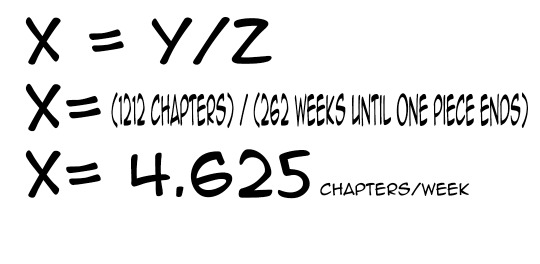
And there’s your answer, just read 4-5 chapters per week. By the end, One Piece should be nearly over or have very recently ended. To put that into a different perspective, you could purchase and read just two volumes per month and you’ll be at prime pace. Or you could read one chapter every day, but only on weekdays. If you want to, you can see this calculation in action in graph form.
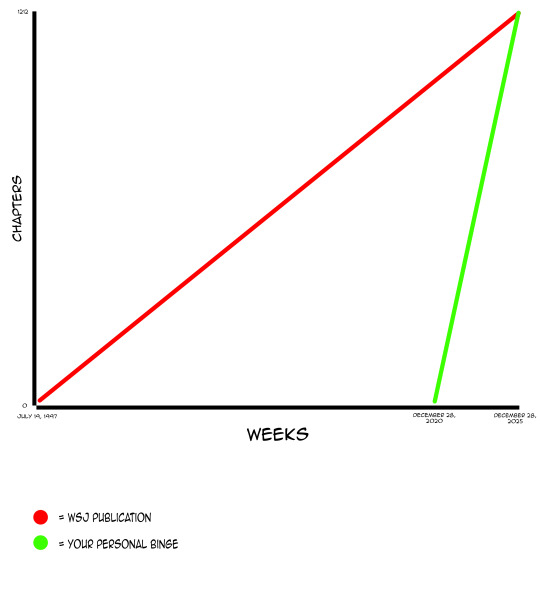
While this is a very rudimentary graph, it’s a basic visualization of what we’re calculating here. We’re calculating what speed we need to binge to catch up at exactly the right moment. I say exact, but ultimately no one can predict how many chapters there will be exactly, nor how many hiatuses Oda will go on during it. It will be important, as you’re nearing the end, to find a spoiler-free way to keep up on how close One Piece is to ending. To know whether you ought to speed up or slow down.
If you plan to watch the anime (subtitled):
For years now people have hated on the anime “terrible animation!” “terrible pacing” but at the end of the day, it’s the more popular version. Or the more viewed version I should say. And personally, I think that once you acknowledge its problems and learn how to deal with them, it’s a perfectly fine experience. There’s enough good voice acting and enough good storytelling that you’re easily able to ignore the problems. Plus, the animation has substantially improved since Wano.
Now for this we’re going to have to change a lot of variables to get this right. We’re going to have to adjust when publication started, and recalculate when One Piece will end by looking at how slowly the anime adapts the manga, and how behind it is. The anime aired on October 20, 1999, and has aired 956 episodes since then. This means on average they air 44.9 episodes per year, meaning there is pretty much only 7 breaks the entire year. With these 956 episodes, they have adapted 955 chapters, making the pace almost exactly one chapter per episode. However this is really inaccurate, considering all the better-paced arcs earlier on in the story. Looking solely at episodes 2012 and onwards, the anime adapts at a pace of 0.65 chapters/episode.
Knowing that there are roughly 212 chapters left, and Toei adapts at 0.65 chapters per episode, we can assume that there are going to be roughly 324 episodes left. That sounds like too many, but keep in mind that there will be several, several instances where the manga will be on hiatus whereas the anime will keep on airing. Knowing there are approximately 324 episodes left, and that the anime only takes about 7 breaks a year, we can assume that it will take 7 years, or 374.49 weeks before the anime will end. So now we have the information we need to do the math again.
x = 1280/374.49
x = 3.417 episodes/week.
It may seem like a more relaxed binge, since you get a whole 2 extra years to binge, and you only have to do 3-4 episodes per week, compared to the 4-5 chapters. But keep in mind that these episodes are 24 minutes each. Still not at all bad, but you will be spending more time on it overall.
If you plan to watch One Pace:
One Pace is a fan project that edits the anime so that filler and padding is cut, other edits will be made to make the anime more manga-accurate, such as reorganizing scenes, or adding title cards where absent. Originally only used by a niche number of One Piece fans, One Pace has grown in popularity, and has tried to improve its quality to accommodate more fans, such as making their episodes Dual Audio (meaning you can switch between the dub and original Japanese audio tracks), and including Spanish subtitles.
You’d think we’d have to adjust for when One Pace began, how slowly One Pace catches up, and the works, but there’s not much to calculate. Fortunately for us, no matter how far behind One Pace is on editing the current arc, they always like to wrap things up just a few weeks within when an arc ended, if not the very same week. So really all we have to calculate is how many One Pace episodes there will be by the end of all this, so that we know how many you’ll need to watch per week.
Looking solely at what they’ve covered so far, One Pace has taken 573 episodes and condensed it down to 259 episodes. That’s a pace of 2.21 anime episodes/ paced episode. Earlier we calculated that there would be 324 episodes of the anime left, making for 1280 episodes total. This would mean that there would be around 578 One Pace episodes by the end. And One Pace would probably wrap up in, let’s say 376 weeks, because as I said, they’ll probably finish editing the final arc a week or two after the last episode airs.
x = 578/376
x = 1.53 episodes per week
Now that’s a relaxed pace. 1-2 episodes per week? That’s so slow, I’m not even sure if I’ll remember what I watched last week next time I watch some episodes. The only problem is some of the pre-timeskip still haven’t been edited. They’ll probably be done by the time they finish the final arc, but that’s not gonna work out fast enough. You’ll hit your first roadblock about 7 weeks in when you need to watch the Baratie arc and it’s not done. And don’t even get me started on how many arcs aren’t done in dub or Spanish sub yet. Hopefully you could just switch to the anime or manga when you hit these arcs, readjusting how many episodes/chapters you need to watch/read when you do. But that’s a bit of an excessive amount of math for something that’s supposed to be fun. So yeah, if you’re still convinced you shouldn’t get into One Piece until it’s ended, maybe this is the option for you.
If you plan to read the manga (Colored):
Since 2012, Shueisha has made a colorization of One Piece. It’s not a fan coloring, it’s as official as it gets. Many consider the color schemes portrayed in this version as the most canon, as the majority are pulled straight from whatever colored illustrations of Oda’s they can find. And quite frankly it makes the manga at least 10 times more beautiful. It’s especially great if you have trouble interpreting dense, small black and white panels.
This one is a doozy. You’d think all I gotta do is calculate how far behind the colored manga usually and just adjust from there, right? Wrong. Because how far behind the colored manga is, or how frequently they release volumes in full color, is one of the most inconsistent things I have ever seen. You wanna see what I’m talking about? This is how they’ve chosen to release each volume since 2012:
Volume 1-12: July 15, 2012
Volume 13-23: September 28, 2012
Volume 24-63: December 4, 2012
Volume 64-65: April 4, 2013
Volume 66-68: December 20, 2013
Volume 69-70: August 25, 2014
Volume 71-72: September 16, 2015
Volume 73-75: October 4, 2016
Volume 76: December 2, 2016
Volume 77: March 3, 2017
Volume 78: July 2, 2017
Volume 79: September 4, 2017
Volume 80: December 4, 2017
Volume 81-82: March 3, 2018
Volume 83: October 4, 2018
Volume 84-86: August 2, 2019
Volume 87-92: September 16, 2020
How I am supposed to find out how long it will take for Shueisha to colorize the final volume of One Piece is beyond me. I guess the first step would be to look at how far behind the manga each release was on average, but I’m going to ignore all the ones before 2013, because those were clearly just Shueisha catching up really fast cause they just started and didn’t want to be dozens of volumes behind forever. So of the 14 publications between 2013 and now, on average the last chapter of the last volume they colored was 97.78 weeks after that chapter had published in Weekly Shonen Jump. This means that if the final chapter of One Piece is chapter 1212 on December 28, 2025, then you can expect the final colored volume to publish November 14, 2027.
x = 1212/359
x = 3.37 chapters/week
So if you prefer the manga but don’t want to read 5 chapters every week for 5 years, this might be a better option for ya. But yea, I have no doubt my prediction is at least a little off for this one.
If you plan to watch the anime (dubbed):
Unlike the 4KidsTV and Odex dubs of One Piece, the FUNimation dub is a perfect way to enjoy One Piece. The DVDs come with enjoyable commentary and a marathon mode, great for binging.
FUNimation’s releases of the dub are inconsistent, although not nearly as erratic as the colored manga release. However, there was recently a 2-year hiatus we only just got out of. Since Episode 1′s dub in May 27, 2008, the dub has gotten as far as Episode 614. But that’s only looking at the DVD releases. If you’re willing to stream on FUNimationnow, the dub is as far as 641, and if you’re willing to digitally purchase it from an e-shop such as the Microsoft store, it goes all the way to Episode 654. With that being said, that would mean that on average, FUNimation dubs 1.004 episodes per week. Although if we go back to before the two-year hiatus so as to exclude it from the average, it’s actually 1.10 episodes per week. Not a huge difference, actually. And then if we look solely after the two-year hiatus, it’s actually 2.25 episodes per week, which is insanely faster. It’s hard to tell what the future of the dub will be. I can’t assume they’ll go this fast forever, so I’m just going to take the average of all 3 and say it’s 1.45 episodes per week. Don’t know if that’s the best mathematical approach, but the number seems about right.
So knowing that the dub is at Episode 654 and looking at our previous guesstimation that the anime will be 1280 episodes long, we can predict that it will take 431 weeks before the dub catches up and ends. That would be in 2029! Sounds quick at first until you notice it’s 4 years behind!
x = 1280/431
x = 2.96 episodes per week
Looks like it’s almost exactly 3 episodes per week. Not as much less of a workload as I expected, compared to catching up to the sub. You know, I figured those 4 extra years would make you binge a lot slower.
Final Thoughts:
There’s a lot of my math that was estimation, approximations, extrapolations. Feel free to correct me or fact check me, especially if you plan on using this. I figured this would be a fun thought excercise. There’s also a lot of smaller variables I simply didn’t want to take into account because of how long this is already. For example, reading the black and white manga. The calculation can vary slightly depending on if you read it the day it’s published (which I assume would have to be a fanscan unless you can read Japanese), reading the weekly publication legally on Viz.com, waiting for the physical volume release. The dub can also vary depending on whether you buy from Microsoft, wait for the FUNimationnow release, wait for the DVDs, or wait for the Collection sets. So feel free to take this into account.
44 notes
·
View notes
Note
curious as to your take on the current debate going on in hamiltonia re: hamilton a slaver vs hamilton not a slaver?
Whew, this is going to be a long answer. Since Jessie Serfilippi’s “As Odious and Immoral A Thing” was first published (I posted a few brief quotes here), likely as part of an ongoing interest in the Schuyler Mansion State Historic Site with the subject of the Schuyler and Hamilton families and slavery (see here for blogposts labeled ‘slavery’ including a couple about AH specifically), there have been three versions of a rebuttal by Michael E. Newton and some people calling themselves Philo (”Love”) Hamilton, one of whom is Doug Hamilton*. The ongoing engagement on this topic also brings up issues of historiography and hagiography.
In this whole discussion there is only one new piece of evidence that Serfilippi has referenced on Twitter but is not part of her article - I’ll get into that below. Everything else is a re-analysis of known and fairly popular sources, so I don’t think going through it point by point would be helpful.
But let’s be clear about something. This discussion around AH is in large part because of this Chernow falsehood: “[f]ew, if any, other founding fathers opposed slavery more consistently or toiled harder to eradicate it than Hamilton.” Chernow also calls AH a “fierce abolitionist” and a “staunch abolitionist” because Chernow doesn’t know what abolitionism is. This lie got tons of mileage with Lin-Manuel Miranda, whose musical character AH may have personal moral defects, but not blind spots as huge and disastrous to a modern audience as a lackadaisical approach to the owning of other human beings. (That Miranda’s approach totally riled some Black artists and scholars is well-known, and I wrote briefly about it here.) Serfilippi’s article doesn’t get the media play it does without the popularity of the abolitionist Founding Father myth that Miranda put on stage. So this conflict and news-cycle interest arose from Chernow’s need to give AH the moral high ground by claiming that he was the best best best abolitionist because Chernow is interested in hagiography, not biography. Unfortunately, Newton-Hamilton seem interested in the same thing.
A brief note on word usage: an enslaver, in most current usage, is defined as someone who participated in any aspect of the slavery enterprise. Considering AH’s undisputed role as money-handler (or the more laughable ‘he was a banker’ assertion in the Newton-Hamilton essay) for members of the Schuyler family acquiring enslaved persons, AH was an enslaver.
In my opinion, on the issue of slavery, AH is damned by his extensive ties from 1780 onwards to the Schuyler family. There’s nothing that can explain away the fact that AH at times lived with, visited, and sent his wife and children for extended stays and to be educated by his slave-owning in-laws. AH did not somehow become innocently involved in slave trading and ownership. Rather, he knew what he was doing when he married into the heavy slave-trading and owning Schuyler family and when he engaged in business acts for that family, including helping them to acquire/sell enslaved persons. These were morally weighty - and abominable acts, argued even in his day - and he did them anyway. There is not any record that remains that he had a problem having his children reared within an abhorrent system/household where people were enslaved and served them; in fact, given the number of times he sent his children to his father- and mother-in-law’s home for extended periods, it could be suggested he found nothing morally objectionable going on there. Philip Hamilton even thanked his enslaver grandfather for his advice on how to “be a good man.” P. Schuyler’s wealth and trading was through the slavery economy. Moreover, AH’s economic concerns were also inextricably tied to slavery - keep in mind that every mention of tariffs on sugar is connected to the slave trade. Almost everything led back to that evil institution.
During AH’s lifetime, a number of white AND Black persons articulated that all enslaved Black and Indigenous persons should be freed, that the practice of enslavement was a grave moral failing. AH was well-informed enough to know that Black Americans were articulating how freedom should be applied to them - indeed, many of the manumission policies of the original states arose from these efforts. So AH was fully aware of the arguments. (His son was involved!) Maybe this helped inspire him and his slave-owning friends and political colleagues to form the NY Society for Promoting the Manumission of Slaves, although none of this group agreed to give up their own enslaved persons as part of the organization of this group.
Or, as Newton-Hamilton audaciously state, “[AH] was more involved in building a nation” sotto voce based on enslavement and racial distinction than he could be bothered to care about the lives of enslaved people. This shouldn’t be a surprise when it comes to AH’s major moral failings/blind spots - he didn’t care about the lives of the people affected by his whiskey tax either. If one wants to nevertheless call this a “good man,” we’re probably looking at each other from across a void.
But this is well-trod territory. Several articles post-Chernow have evaluated and summarized positions on AH and slavery that I share:
“Hamilton's position on slavery is more complex than his biographers' suggest. Hamilton was not an advocate of slavery, but when the issue of slavery came into conflict with his personal ambitions, his belief in property rights, or his belief of what would promote America's interests, Hamilton chose those goals over opposing slavery. In the instances where Hamilton supported granting freedom to blacks, his primary motive was based more on practical concerns rather than an ideological view of slavery as immoral. Hamilton's decisions show that his desire for the abolition of slavery was not his priority.” Michelle DuRoss, “Somewhere in Between: Alexander Hamilton and Slavery,” Early American Review, 2011 [part 1, part 2]
“But it does illustrate something that his primary modern biographers have been reluctant to concede: Hamilton routinely subordinated his antislavery inclinations to other family and political concerns, and he did not ever approach even a modest level of engagement on the issue in his otherwise voluminous published works.” Phil Magness, “Alexander Hamilton’s Exaggerated Abolitionism,” 2015
“He was not an abolitionist...[h]e bought and sold slaves for his in-laws, and opposing slavery was never at the forefront of his agenda.” Annette Gordon-Reed, “Correcting ‘Hamilton’,” Harvard Gazette, 2016.
Serfilippi extends this:
When those sources are fully considered, a rarely acknowledged truth becomes inescapably apparent: not only did Alexander Hamilton enslave people, but his involvement in the institution of slavery was essential to his identity, both personally and professionally.
I have no objection to her statement. We simply have no record of AH strongly challenging the institution of slavery, while several of his colleagues and friends most certainly did. Instead, we have the financial transactions, the possible use of enslaved labor, and the possible ownership of enslaved persons, alongside his strong personal, professional, and political ties to owners of enslaved persons. And the new evidence: the inclusion of the following in a list of persons dead of Yellow Fever in NYC 1798, “Hamilton Alexander, major-general, the black man of, 26 Broadway” An Account of the Malignant Fever, Lately Prevalent in the City of New-York, 1799. We cannot know if this was an enslaved man or a free Black man who lived and labored for the Hamiltons, but it should eliminate anyone confidently stating that the Hamiltons did not own enslaved persons.
Thus, Serfilippi has successfully accomplished at least one important goal: bringing to the forefront the names (as we have them) of persons, servant or enslaved, connected to the Hamiltons.
I wrote above that part of the problem here is hagiography. If his concern is with the truth, I certainly look forward to Newton’s chapter-by-chapter repudiations of books written by Chernow, Brookhiser, and Knott on AH and the AH/GW relationship.This leads to the second issue that has arisen: the unprofessional, and frankly gross, glee in trying to punch down on a young female scholar. In my own field (an ex-partner is a military historian so I’ll speak for their field too), the approach when one believes a colleague is publishing in error and one has additional information that could illuminate the issues is to contact them and seek to work together to analyze and draw conclusions. Newton and the anonymous Love Hamilton clan didn���t treat Serfilippi as if she were deserving of this respect. Moreover, Newton has never, to my knowledge - and I purchased his books! - gone this hard after Chernow, who certainly deserves it even more.
But Newton-Hamilton betray their own concerns here: “Considering the era in which Hamilton lived, the challenges he faced, and his accomplishments, it is not difficult to understand why Hamilton did not make opposition to slavery his primary focus. His attention was on building a nation.” And what kind of nation was that? At the Constitutional Convention, AH’s lengthy speeches on the formation of the government have been recorded. There is no record of him offering any statements about the slavery issue, unlike his friend Gouverneur Morris.
Newton-Hamilton continue: “Unfortunately, that meant neglecting other important matters, not just slavery but also his own financial well-being.” Wow, a comparison is made between AH’s personal finances and the ownership of human beings. Could these authors be any clearer that the slavery issue is an inconvenience that they are ultimately unconcerned about? I’m unsure if Newton-Hamilton realize just how gross their attempt at addressing this issue has been, and that it’s hard to take their interpretation and analysis of the evidence seriously when these are the kinds of statements making their way into the rebuttal essays.
Now there is an interesting discussion about how even later abolitionists did not see a conflict in the employment of enslaved labor, but that too isn’t something that Newton-Hamilton show interest in. Instead, their approach seems to be that AH needs to be celebrated at all costs, and thankfully, those days are passing into history.
*It’s ridiculous that a group of people have given themselves a stupid pseudonym to avoid attaching their actual names to a so-called scholarly article. And I’m aware that I’m writing this anonymously, but on tumblr where maybe 5 people have made it to the end of this (I’m not publishing it on my real blog).
**I will not link it, but it can be found on Newton’s blog discoveringhamilton.
42 notes
·
View notes
Text
Ranking : Jim Jarmusch (1953 - present)
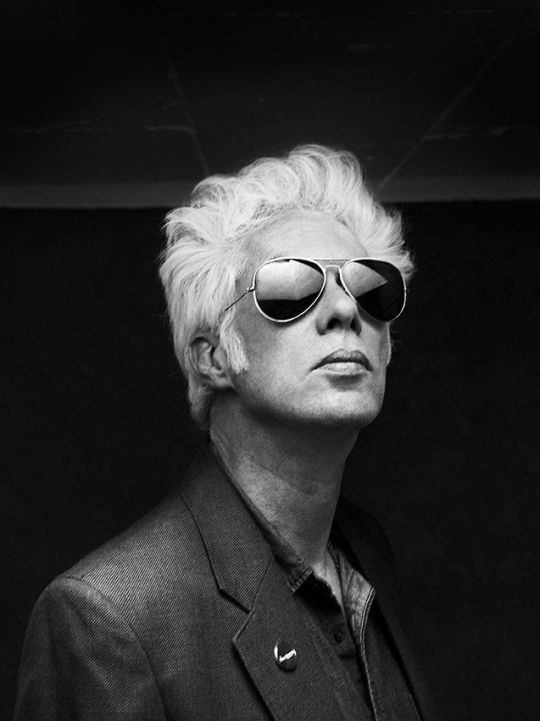
When you get someone adept at the art of filmmaking that can resonate at the highest vibrations when creating, that is a blessing in itself, but when you get a jack of all trades, everyman who is deeply observant and unabashedly humanist, and happens to make films to boot, then you start reaching the realms of Jim Jarmusch. As a Midwestern kid who studied at New York’s famed Columbia University before transitioning to a span in Paris, Jarmusch has the unique gift of deeply appreciating lofty art on the same level as outsider, underground art, and by understanding the context that connects all of them, his appreciation of time is enhanced by association. In a world that has become obsessed with taking in information with no intention of retention at a breakneck speed, it is refreshing to know that Jim Jarmusch has stood his ground in terms of deliberate pacing and tone.
Most of my Jarmusch familiarity came from the first half of his catalog, and it’d been years since I watched his work, so rather than rank what I remembered while trying to fit first watches in, I decided that the time was right to revisit the entire catalog. Doing so not only gave me a broader understanding of his overall vision, but it made me realize that a director with 25 years in the game is still capable of making drastic style shifts. Without further ado, here is my preferential ranking of the 13 Jim Jarmusch films available as of March 2021.

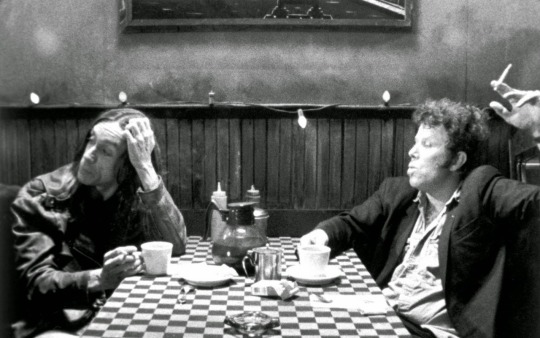
13. Coffee and Cigarettes (2003)
This isn’t a bad film, but Coffee and Cigarettes definitely reeks of a narrative-less venture. The best parts of Coffee and Cigarettes come in attempts at placing what was shot explicitly for the film, versus what was shot during the previous fifteen or so years that Jim Jarmusch directed other feature films. Taken as a collection of independent vignettes, the film is rich in memorable moments, but for a director so adept at unifying themes with incredible nuance, specifically within the obtuse hurdles presented by an anthology film, Coffee and Cigarettes feels much more like assorted pieces than a fractured whole. More so than an original idea, the movie feels like a deep cut that true fans will appreciate, casual fans can easily reference, and Jarmusch-laymen can use as an entry into deeper conversations. If nothing else, see Coffee and Cigarettes for the incredibly entertaining scene where Cate Blanchett acts circles around Cate Blanchett, but Cate Blanchett still does her thing.

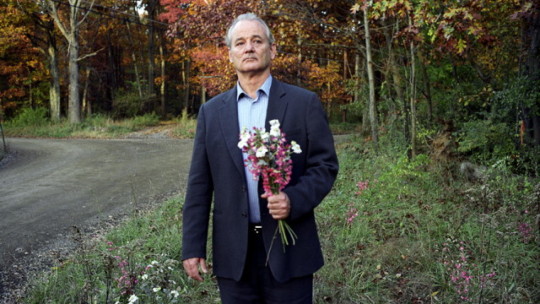
12. Broken Flowers (2005)
Bill Murray has been popular longer than I’ve been alive, but somewhere around the beginning of the 21st century, it seemed like the entire world caught Bill Murray fever in a major way. After a couple of iconic roles in films by Wes Anderson and Spike Jonze, his star was riding new and unfathomable highs, and that was right when Jim Jarmusch teased collaboration via Coffee and Cigarettes before diving headlong into it with Broken Flowers. Of all the Jim Jarmusch films, this one still feels the least like his style, at least in terms of purity. Most of its magic comes from surrounding Bill Murray with Jeffrey Wright as a human conscience, as well as a parade of memorable actresses the likes of Sharon Stone, Frances Conroy, Jessica Lange, TIlda Swinton, Chloë Sevigny and more. The film runs high on charm, and for any man staring at the Autumn of his years, the feelings of romantic regrets are likely relatable on some level. Interestingly, this project feels like one of the most accessible in the Jarmusch canon, perhaps because of its efficient production presentation. If there were ever a Jim Jarmusch date movie, it’s Broken Flowers.

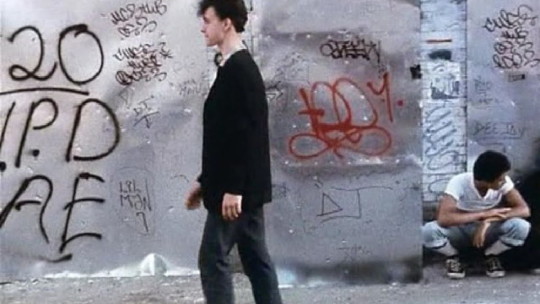
11. Permanent Vacation (1980)
Upon initial viewing, Permanent Vacation possesses many of the earmarks of a student film, such as limited locations, long passages with minimal dialogue, symbolic monologues in place of standard narrative dialogue, and isolated characters within the context of an implied bigger world. The strengths that the film possesses, however, are elements that became staples in Jim Jarmusch films : a protagonist either absent of motivation or driven from within, cross-cultural fascination and iconography and the aforementioned patient approach to narrative are some of the key ingredients in the Jarmusch recipe. As a unique voice in a burgeoning New York collective of filmmakers, it makes total sense that his debut would be both an ode to New York City and an ode to living life like an outsider in the mecca of culture. This film probably wouldn’t be the best place to start a curious party to the Jim Jarmusch canon, but it would certainly be one to circle back to if their interest is piqued… I would recommend this one to fans of Richard Linklater’s early work for sure.

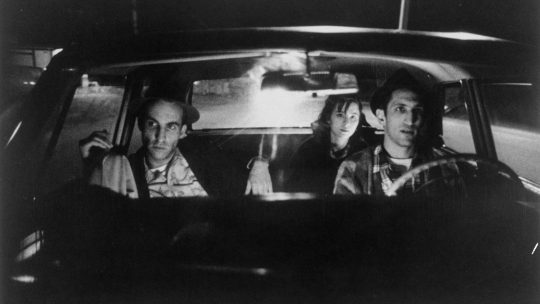
10. Stranger Than Paradise (1984)
Stranger Than Paradise marks the first of many black and white commercial releases from Jim Jarmusch. As a second film, it has everything you’d want to see from a director finding his place in the industry : the cinematography has evolved and incorporated more movement, Jarmusch is starting to let his personality shine through via musical choices, and the stories are evolving into more relatable narratives rather than ruminations on isolation (while simultaneously becoming much funnier). Jarmusch still isn’t afraid to let his films breathe, however, which leaves his distinct style present even among the areas of growth. The incorporation of a strong female lead presence (thanks to Eszter Balint’s brilliant performance) showed that Jarmusch had a full understanding when it came to presenting stories for everyone on the screen, rather than limiting his voice to male characters. The casting of John Lurie and Richard Edson opposite one another is kinetic both visually and in terms of performance, as each of their versions of uptight laid-backness compliment one another.

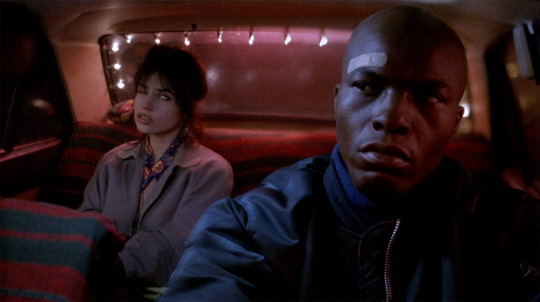
9. Night on Earth (1991)
Of the anthology films that Jim Jarmusch has created, Night on Earth is possibly my favorite. More so than any of the others, it captures the intriguing aspects of human nature by juxtaposing them directly against the very human tendency to judge books by their covers. With the vast majority of the film taking place in a handful of taxi cabs, we are left in the hands of the actors and actresses in the hopes that their interactions, chemistry and dialogues can keep us captivated, and the cast presented in the film completely stand up to the challenge in their pairings. Jarmusch also presents movie audiences with a way to show different worldly locations without having to lean on the cinematic and iconic shorthand that we are used to, such as the Hollywood sign, Times Square, the Eiffel Tower and so on… instead, we are shown places that locals would inhabit in all of their rundown and lived in glory, which in turn, amplifies the grounded realness of the interactions, as if we are looking at a fictional blueprint for what would later become the popular HBO series Taxicab Confessions. This film sits in-between two of Jim Jarmusch’s most iconic releases, so it is easy to see how this one could be easily lost in the shuffle, but it is certainly not a film to be missed, especially for those who would consider themselves Jarmusch fans.


8. Paterson (2016)
Jim Jarmusch brings a humble sense of humanity to all of his films, but Paterson stands out for its nuance, subtlety and confidence in its patience. Much like Forrest Gump or a less abstract Charlie Kaufman film, Paterson dwells in an interesting realm of an unknowingly wise protagonist tethered to the center of tornado-like emotions and experiences from all they encounter. Jarmusch manages to take this framework, dial down the absurdity to a sneaky degree, and ramp up the grounded elements to the point where a viewer cannot help but graft pieces of themselves onto the events presented. As a musician with a day job, I can also relate to Paterson’s displays of beauty found in redundancy, and the peace that comes with understanding intentions for creative expression, even if others see it in a different light that you do. While not the grandest of Jim Jarmusch gestures, it is without a doubt one of the most sincere and heartfelt of his selections.

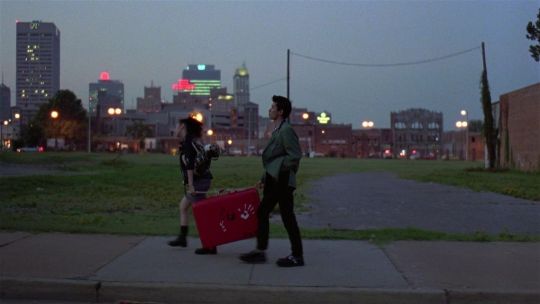
7. Mystery Train (1989)
Mystery Train marks the first definitive signs of Jim Jarmusch knowing, understanding and utilizing the tools he’d come to favor in a manner that seemingly resonated what he pictured in his head. Memphis as a setting provides the juxtaposition of beauty and urban decay captured in Permanent Vacation; placing our audience on a journey with two foreign tourists brings the worldly view introduced in Stranger Than Paradise; and, most importantly, all of the coolness and humor that thrived in Down by Law returns triumphantly. Jarmusch also puts anthology filmmaking on the table, which is important for two reasons… first and foremost, it would become a style he would go on to thrive in, returning to it immediately with Night on Earth and once more with Coffee and Cigarrettes… secondly, as for Mystery Train directly, it allowed Jarmusch to surround Masatoshi Nagase and Youki Kudoh (burgeoning stars Western audiences were unfamiliar with) and Nicoletta Braschi, and surround them with his talented friends like Steve Buscemi, Cinqué Lee, Rick Aviles, Vondie Curtis-Hall and Tom Noonan, as well as legendary musicians like Tom Waits, Joe Strummer, Screamin’ Jay Hawkins and Rufus Thomas. Between these high profile castings, the stylish cinematography and the heartfelt quirkiness of the leads, Mystery Train feels like the film where everything came together in the best ways possible.


6. Down by Law (1986)
To my knowledge, Down by Law would be considered the breakout success of the Jim Jarmusch library. John Lurie returned to the fold to provide another performance infused with coolness, but this time around, up and coming Italian star Roberto Benigni and iconic recording artist turned actor Tom Waits share lead duties, forming an unlikely trio with monstrously dynamic on-screen chemistry. Jarmusch not only switched things up for himself by setting the film in New Orleans rather than centering it around New York, but he turned the jailbreak genre on its ear by focusing on the escapees rather than the escape itself. The conflict between Jack and Zack is seeded with their individual problems with women (which both include emasculating each man by chastising them for not using domestic violence), as well as each of them ending up framed prior to imprisonment, which makes Roberto the de facto peacemaker despite his huge language barrier. Down by Law marks the first time that edginess found its way into a Jim Jarmusch film, and while it never became his forte, it wasn’t the last time that element was key to a Jarmusch film.

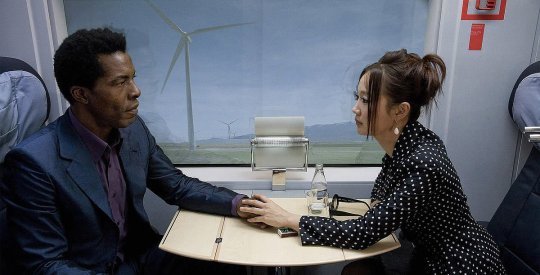
5. The Limits of Control (2009)
When reflecting on The Limits of Control, the word patience comes to mind : the patience of accepting repetition… the patience of a trilingual film with minimal dialogue… the patience of a film that shows much more than it tells. As a take on noir, the Jim Jarmusch variety brings to mind films like Le Samourai, where actions speak infinitely louder than words, choices come with a definitive set of consequences, and we as viewers are allowed to consider what we are presented with in real time, just like our protagonist. The coolness levels are also pushed to maximum levels in this film, but then, what’s a Jim Jarmusch film without a generous dose of cool in it? While it is never rightly stated, I like to pretend that The Limits of Control takes place in the same universe as Ghost Dog, with Raymond having evolved into The Lone Man using the tools left behind by Ghost Dog. Maybe it’s a bit of embellishment on my end, but it makes an already great film have that little extra touch of pizazz needed to stand out from the pack.


4. Ghost Dog: The Way of the Samurai (1999)
While Jim Jarmusch isn’t necessarily a household name, he is relatively well known, and for many familiar with his work, Ghost Dog: The Way of the Samurai served as the introductory film for them. The casting of Forest Whitaker in the lead role continued the trend of higher profile names joining the Jarmusch fold, and stylistically, the mixture of Ghost Dog’s hitman and samurai worlds with that of the mafia film (which was about to see a popularity resurgence in light of the recent premier of The Sopranos) was alive, kinetic, and rich with varied personalities. Ghost Dog: The Way of the Samurai also stood as an early example of RZA’s talents in the realm of scoring films, which would later go on to be a key element of Kill Bill: Vol. 1. For a movie with a more traditional approach, perhaps even the most accessible approach of all Jarmusch films, Ghost Dog: The Way of the Samurai is anything but conventional, and it’s the sense of pride it wears in its non-conventionality that makes it the cult classic it became.

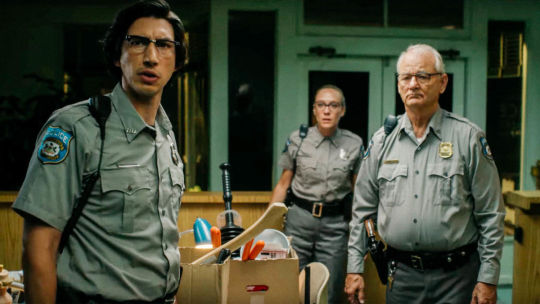
3. The Dead Don't Die (2019)
Not since Dead Man has Jim Jarmusch picked such a distinct genre for a film of his, or decided to include such a long list of high profile names in character roles. While the sense of doom that usually comes with zombie movies is present, Jarmusch sticks to his toolkit by focusing solidly on the human element during the early portions of the film where many people would already have zombies doing the narrative and visual heavy lifting, and in turn, the audience finds themselves drawn deeper and deeper into the story well before the undead arrive. Of all the Jarmusch films, The Dead Don’t Die has the rare designation of being the only one that seems to comment on film itself, be it references to iconic characters from other properties, ruminations on film as a format, or even discussions centered around film fandom. While most films tend to stay around from outright explanations of whatever the root cause of the zombies are, The Dead Don’t Die uses the vacuum as a brief opportunity to make a comment on polar fracking and other climate/environment-altering processes. Even the zombies get the most on-screen humanity received since the days of George Romero’s Dead series, a refreshing change of pace that has been often ignored in recent films centered around the undead. Films like this one prove that Jim Jarmusch has the capacity to make films about most anything, and the further he strays from his supposed comfort zone, the seemingly better the films get.

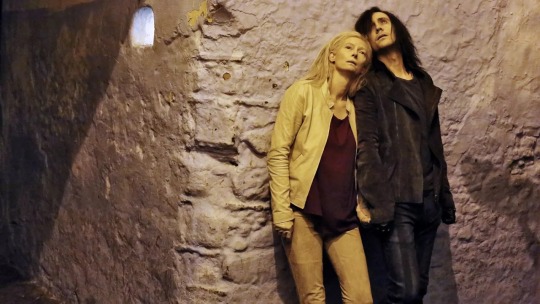
2. Only Lovers Left Alive (2013)
For a man so dedicated to being aware of the passage of time, a man with a deep appreciation for nostalgic cool of all eras, and a man with a rich and layered appreciation for art and music from across the board, it makes total sense that Only Lovers Left Alive would be a celebration of all these aspects framed as an eternal love with a deep cross-section between the original lovers and the tales of vampires. The vampiric leads allow Jarmusch the perfect vehicle to seamlessly tie stellar creativity from any point in time with a singular line, and the deep implications of our protagonists' names suggest a subtextual lore that one could likely build a cinematic universe around. For a venture with aspirations this lofty, the casting must fit the call, and the main four of Tilda Swinton, Tom Hiddleston, John Hurt and Jeffrey Wright build a solid foundational square for all characters to navigate deep emotions freely. If you’re looking for Twilight and Interview with the Vampire fare, you’ll probably long for more, but if films like Let the Right One In are more your speed, then Only Lovers Left Alive will likely be a revelation.


1. Dead Man (1995)
While Jim Jarmusch never lost his auteur sensibilities, Dead Man marked his initial foray into the world of larger scale traditional productions through the vehicle of the period piece. Jarmusch films were not unfamiliar with showing us a broader view of the world we know, but transposing his trademark style into the world of the Western marked a bold (but ultimately rewarding) turn. With Neil Young serving as his Ennio Morricone, Jarmusch dusted off his black and white filmmaking equipment and seemingly told the production design team to blend all of the best parts of Spaghetti Western and German Expressionism. Johnny Depp, the film’s star, was riding the wave of success afforded from What’s Eating Gilbert Grape?, Benny & Joon and Ed Wood, and Dead Man carried that momentum right along. As for his Western universe, the list of names that Jarmusch chose to populate it with is where his style stood out : Crispin Glover, John Hurt, Robert Mitchum, Iggy Pop, Gibby Haines, Gabrielle Byrne, Billy Bob Thornton, Alfred Molina and more drive home Depp’s “fish out of water” characterization convincingly. Based on its period-piece designation, Dead Man signalled a drastic leap in style utilization for Jarmusch, a creative rarified air that he would return to for several future productions.
#ChiefDoomsday#doomonfilm#JimJarmusch#PermanentVacation#StrangerThanParadise#DownByLaw#MysteryTrain#NightOnEarth#DeadMan#GhostDogTheWayOfTheSamurai#CoffeeAndCigarettes#BrokenFlowers#TheLimitsOfControl#OnlyLoversLeftAlive#Paterson#TheDeadDon'tDie
14 notes
·
View notes
Text
All the dramas I’ve watched in 2020
These are all the dramas that I watched in 2020, with some review there should be NO Spoilers. I think I watched a lot more than usual probably because what else am I supposed to do between school and quarantine. So this is gonna be a long one...
Crash Landing on You (Lee Jung-hyo, 2019-2020)
Main Leads: Hyun Bin and Son Ye-jin
Episodes: 16, 70 to 110 Minutes
Thoughts: I enjoyed this drama, and it was a good one to start 2020 with. I thought it was a perfect blend of romance, comedy, heartfelt, found family, action, and some tragedy. I would highly recommend it, especially for those who are new to Kdramas. Also fun fact this is my first Hyun Bin drama. Rating: Fun and adorable
Tale of Nokdu (Kim Dong-hwi, 2019)
Main Leads: Jang Dong Yoon and Kim So Hyun
Episodes: 32, 35 minutes
Thoughts: I actually started watching this when it was airing but I stopped around episode 13 because of my busy schedule and finished it in the new year. I adore the main couple, the romance, comedy, the found family, and the women center story. I thought it shined the brightest when it was focused on the group and its funny and warm moments but once it got too political it kinda fell flat. I loved the ending, however. Also, I really like Jang Dong Young as an actor, I saw him in Solomon’s Perjury (2016) and Mr. Sunshine (2018) and I loved how he played Nok Du too. Rating: I love a women’s only widow village
I’ll Find You When The Weather is Nice (Han Ji-seung, 2020)
Main Leads: Seo Kang Joon and Park Min Young
Episodes: 16, 60 minutes
Thoughts: I really liked this drama, probably one of my favorites this year. As you will notice I enjoy quieter and more slow-burn stories. Also, I am a fan of Park Min Young she tends to pick more interesting and strong-willed female roles, so it is really enjoyable to watch. Rating: makes me want to own a book store.
King: The Eternal Monarch (Kim Eun-sook, 2020)
Main Leads: Lee Min Ho and Kim Go Eun
Episodes: 16, 70 Minutes
Thoughts: Confession; I am actually not the biggest fan of Lee Min Ho, nothing against him I just hate rich bratty characters and he tends to play them. However, I surprisingly really liked his character, he wasn’t a rich brat he actually was likable. I also really like Kim Go Eun, she is actually one of the main reasons why I watched and also with all the hype around it. Woo Do Hwan, who I have always liked, stole the whole show, however. I didn’t hate it like a lot of people, I really liked the characters, I liked the romance and the action. Also, Lee Min Ho and Kim Go Eun’s hugs were absolutely fabulous. It wasn’t my favorite and there were too many product placements, but I don’t think it was the worst drama this year. Rating: Lukewarm
A Piece of your mind (Lee Sang-yeob, 2020)
Main Leads: Jung Hae In and Chae Soo Bin
Episodes: 12, 70 minutes
Thoughts: I actually really liked this drama despite the low views, again I’m big on slow burn stories and character focus. I believe the episodes were cut from 16 to 12 I don’t know exactly why maybe because of the Pandemic or due to viewership or a mixture of both. Despite its being cut short I really liked the ending, and I thought the two leads were sweet. Rating: Wish we had more time to develop the characters.
Its Okay not to be Okay (Park Shin Woo, 2020)
Main Leads: Kim Soo Hyun and Seo Yea Ji and Oh Jung Se
Episodes: 16, 70 to 85 minutes
Thoughts: Out of all the dramas I talked the most about this one. I have always been a fan of Seo Yea Ji since Save Me (2017) and Lawless Lawyer (2018) and I am happy to see her getting more recognition because of this role. The entire cast was amazing and I think I cried every episode. Such a good and heart-wrenching drama which is why I chose to watch it before work every time. Rating: I would let Seo Yea Ji stab me with a knife anytime.
Mystic Pop up bar (Jeon Chang-geun, 2020)
Main Leads: Hwang Jung Eum and Yook Sung Jae and Choi Won Young
Episodes: 12, 70 minutes
Thoughts: I actually watched this while I was watching Its Okay Not to Be Okay and it was a nice balance to it because this was more of a found family story with less heartbreaking moments. Though it did have its share of heartbreak. I really liked all the characters and their relationship. Also, I am a sucker for bureaucratic fantasy/ magic, and kdramas are so good at it. Rating: I wish it was 16 episodes.
When the Camila Bloom (Cha Yeong Hoon, 2019)
Main Leads: Gong Hyo Jin and Kang Ha Neul
Episodes: 20, 63 to 75 minutes
Thoughts: I liked the story overall, the romance was cute and the mystery was interesting but I thought the family expectations was the best part of the story. This was not my favorite drama, but it was enjoyable and heartfelt. I watched it right after It's Okay Not to Be Okay and while I was watching Flower of Evil (2020) which probably is why I was so underwhelmed by it. Rating: Sweet romance and adorable found family.
Flower of Evil (Kim Cheol Kyu, 2020)
Main Leads: Lee Joon Gi and Moon Chae Won
Episode:16, 70 minutes
Thoughts: This was my favorite drama of this year. I went into this drama not thinking much of it, and I mainly watched it as a post drama blues drama. It was an action and thriller which I mainly don’t get attached to plus I am a huge fan of Lee Joon Gi. I should have known better, I cared so much about all the characters, the acting phenomenal, also every time they showed their hands I cried. This drama left me shriveled and empty inside. Rating: Lee Joon Gi will literally kill me one day.
Put Your Head On My Shoulders (Zhu Dongning, 2019)
Main Leads: Xing Fei and Lin Yi
Episodes: 24, 40 to 45 minutes
Thoughts: This is the first Chinese drama on this list. I thought it was cute, I liked the couple and thought it was alright. I started to dislike the male lead later in the series but it was overall fine. It was basic and sweet with very little drama. Rating: It did its job.
The School Nurse Files ( Lee Kyoung Mi, 2020)
Main Leads: Jung Yu Mi and Nam Joo Hyuk
Episodes: 6, 45 to 57 minutes
Thoughts: This is probably my second favorite drama. I couldn’t tell what happened in the drama but I loved it. I thought it was weird and fascinating, and just so magical. I loved the children and just how the whole school was just off its rocker. I also think that Nam Joo Hyuk does really well in serious roles, and I thought he did a really good job here. Rating: 1 jelly heart.
Mr. Heart (Park Sun Jae, 2020)
Main Leads: Cheon Seung Ho and Lee Se Jin
Episodes: 8, 11 Minutes
Thoughts: This was 8 episodes of start fluff and I adored it. Apparently, it is apart of a BL series by Park Sun Jae and there is a movie version that I haven’t watched. If you want to destress and watch just fluff this is the show for you. Rating: If it is any sweeter I would be going to the dentist.
You are My Destiny ( Ding Ying Zhou, 2020)
Main Leads: Xing Zhao Lin and Liang Jie
Episodes: 36, 45 minutes
Thoughts: I hated this drama, I thought it was the worst thing ever. I don’t know why I even watched all 36 episodes. Apparently, it is a remake of a popular 2008 Twaniese drama Fated to Love You and there is a Korean remake of it as well. I have watched neither of them, so I was brand new to this story. I hated, despised the male lead. He was whiny, entitled, and an asshole. The only good part of the drama was the male and female lead actually had a lot of chemistry, unfortunately, they are playing awful characters. Rating: This was made in 2020???
First Romance (Ding Pei, 2020)
Main Leads: Wan Peng and Riley Wang
Episodes: 24, 45 Minutes
Thoughts: This is another Chinese drama. Similar to Mr. Heart (2020) this show was super fluffy. I really liked the main couple they seem to respect each other and they both had adorable crushes on each other. I loved the whole dumb jock and dumb artist dynamic it was so funny. Rating: Cute!!!
Lost Romance ( Eri Hao, 2020)
Main Leads: Marcus Chang and Vivian Sung
Episodes: 20, 70 minutes
Thoughts: This is the only Twainese drama on this list. I think I liked this drama, I actually only remember very little of this drama. I like the CEO in the real world more than the book world, and I also really liked the female lead except she lowkey stalked the CEO like that was not okay. Rating: I think I liked it???
When We Were Young ( Deng Ke, Liu Guo Hui, 2018)
Main Leads: Neo Hou and Wan Peng and Gala Zhang and Pan Mei and Ye Marcus Li
Episodes: 24, 45 minutes
Thoughts: I really liked this film, I loved all the characters and thought it was all very heartfelt. I cried like a baby, and Hua Biao was such a touching and relatable character. And the whole grandma story hit so close to home. Rating: Made me cry like a baby.
Moment of 18 ( Sim Na Yeon, 2019)
Main Leads: Ong Seong Wu and Kim Hyang Gi
Episodes: 16, 70 minutes
Thoughts: I really liked this drama, and I thought the romance was so cute. I also really liked the relationship between the moms and was sad that the rich mom was a bitch and ruined the friendship. I also wasn’t a big fan of the ending, but I loved the rest of it. Rating: The main lead is part of a boy group because he had a random singing moment.
Perfect and Casual ( Li Shuang, 2020)
Main Leads: Miles Wei and Xu Ruo Han
Episodes: 24, 45 minutes
Thoughts: This is another Chinese drama on this list. I’m pretty sure it's considered an Idol drama so that sets your expectations. I really liked this drama a lot, I am a big fan of contract marriages and I thought the leads were so cute together. Also, this is the first contract marriage drama where the leads don’t break up which I like. A lot of the drama came from outside of the relationship. Rating: You can’t analyze love.
Le Coup De Foudre ( Wang Zhi, 2019)
Main Leads: Janice Wu and Zhang Yujian
Episodes: 35, 45 minutes
Thoughts: My favorite Chinese drama on this list. I loved this drama, I thought it was sweet and simple and the main couple was so realistic. Unpopular opinion I disliked the second couple and the best friend I thought she was annoying and brattish. However, I adore the main couple and their relationship. Rating: Realistic sweet romance.
More Than Friends ( Choi Sung Bum, 2020)
Main Leads: Ong Seong Wu and Shin Ye Eun
Episodes: 16, 70 minutes
Thoughts: I enjoyed the overall story and characters. I loved the group and their relationships. Also, Young-Hee made me cry, and her relationship with Hyun Jae was so sweet. The main leads were also sweet, and I related a lot to Lee So. I just didn’t like the back and forth. Rating: How many times can we break up in a drama.
Be With You ( Zhou Miao, 2020)
Main Leads: Ji Xiao Bing and Zhang Ya-Qin
Episodes: 24, 45 minutes
Thoughts: This is the last Chinese drama I watched this year. It was alright, the romance was sweet, I really like the female lead, and the male lead was nice to look at. It was okay. Also, the second couple was so ??? She was his boss, enemy, and older than him, what?? Rating: Sometimes you need to fall in love to be creative.
Moon Lovers: Scarlet Heart Ryeo ( Kim Kyu Tae, 2016)
Main Leads: Lee Joon Gi and Lee Ji Eun (IU)
Episodes: 20, 60 minutes
Thoughts: I know I am really late watching this, but I finally did. I went in knowing this would hurt me and Lee Joon Gi already scared me this year ( damn this man) so I was fully prepared. I really wasn’t, it so much. (SPOIlERS) When Wang Eun and Park Soon Deok died I sob like a baby (SPOILER ENDING). It took me a long time to finish this show because its heart so much, like it physically hurt me. The show was really good, and heartbreaking, and the ending stabs me in the heart 20 times. Rating: Lee Joon Gi is trying to kill me with tears.
Persona ( Lee Kyoung Mi, Yim Pil Sung, Jeon Go Woon, and Kim Jong Kwan, 2019)
Main Leads: Lee Ji Eun (IU)
Episodes: 4, 19 to 27
Thoughts: This is a collection of mini-films by directors. 4 separate stories are starring Lee Ji Eun. I thought all of them good, especially “ Kiss Burn” and “Walking at Night.” There isn’t much else to this, more than it is an artistic display of filmmaking. Rating: Hipster Kdrama
Come and Hug Me ( Choi Joon-bae, 2018)
Main Leads: Jang Ki-Yong and Jin Ki-Joo
Episodes: 32, 35 minutes
Thoughts: I actually just finished this show today. I really liked it, I thought it was both sweet and heartwarming/wrenching. I hated that one journalist and the public like why are they blaming a victim. I didn’t watch it with my full mind because I’ve been distracted lately, but I did enjoy it. Rating: another cute but sad couple.
Movies I watched this year:
Spell Bound ( Hwang In Ho, 2011)
Main Cast: Son Ye Jin and Lee Min Ki
Running Time: 114 Minutes
Thoughts: I watched this at like 12 am after a bad day and it was cute. I love RomCom fantasy, which I think Korean media does really well. I don’t know what else to say except it is a really cute romance. Rating: Is it the ghost or the butterflies
The Host ( Bong Joon Ho, 2006)
Main Cast: Song Kang Ho and Byun Hee Bong and Park Hae Il and Bae Doona and Go, Ah Sung
Running Time: 119
Thoughts: This film I had to actually watch for class. It was a really good film which is expected from Bong Joon Ho. I love monster films and I thought this was a good rendition of this film. Also, The monster was so cool especially from 2006. I thought it was heartbreaking, stirring, and so beautifully shot. Rating: Oscar-worthy Direction
Little Forest ( Yim Soon-rye, 2018)
Main Cast: Kim Tae Ri and Ryu Jun Yeol and Moon So Ri and Jin Ki Joo
Running Time: 103 minutes
Thoughts: I really, really liked this film. It reminded me so much of I’ll Find You When The Weather is Nice (2020) that I thought that it was based on this film but it isn’t. I have watched this film 3 times since October and every time I watch it have made bread. I really just love everything about this film, how quiet it is, the cinematography, the acting, just everything. Rating: Three loaves of bread.
Always ( Song Il Gon, 2011)
Main Cast: So Ji Sub and Han Hyo Joo
Running Time: 106 Minutes
Thoughts: I thought it was okay, I watched it while I was knitting so I was distracted a bit. But I thought the couple was sweet, and the characters were interesting. Rating: It's Okay.
Currently watching
True Beauty ( Kim Sang-hyeop, 2020-)
Main Cast: Moon Ga Young and Cha Eun Woo and Hwang In Yeop
Episodes: 16, 70 minutes
Thoughts: This is currently an ongoing series that is actually really popular. Apparently, it is based on a webtoon, which I haven’t read. I like it so far, I always liked Moon Ga Young and I think she is a great actress. She plays Im Ju Kyung in a likable and insecure way, instead of someone annoying which could easily happen. I will be continuing watching. Rating so far: Okey dokey yo.
Live On ( Kim Sang-woo, 2020-)
Main Cast: Jung Da Bin and Hwang Min Hyun
Episodes: 8?, 60 Minutes
Thoughts: I really Like this show. The main couple is sweet and supportive. I really like the female lead, I like that she is cold and kinda quiet, but with a sweet spot if you are not a dick. I really like the main relationship conflict comes from friendship instead of romance, I think it makes the show more interesting. Rating: I want to Join a Broadcast group.
On My List:
I actually don’t have anything else on my list so if anyone has recommendations please tell me. I am thinking about watching Mr. Queen ( 2020) because I really like Shin Hye Sun. I also want to watch Sweet Home (2020) the Netflix series. But please recommend me some dramas!!!
This is such a long list, and I had fun doing it and going back over all the dramas. I hope everyone has a good New year and that we will have many more good dramas in 2021!
#kdrama thoughts#kdrama#kdramas#kdrama review#kdramas 2020#2020#crash landing on you#hyun bin#son ye jin#tale of nokdu#jang dong yoon#kim so hyun#i'll find you when the weather is nice#i'll find you on a beautiful day#seo kang joon#park min young#king: the eternal monarch#the eternal monarch#lee min ho#lee minho#kim go eun#woo do hwan#a piece of your mind#jung hea in#chea soo bin#its okay not to be okay#psycho but its okay#kim soo hyun#seo yea ji#mystic pop up bar
36 notes
·
View notes
Text
World Book Challenge: China
Officially, the People's Republic of China (PRC). It is the world's most populous country, with a population of around 1.4 billion. It covers approximately 9.6 million square kilometers, and is officially divided into 23 provinces, five autonomous regions, four direct-controlled municipalities (Beijing, Tianjin, Shanghai, and Chongqing), and the special administrative regions of Hong Kong and Macau.

The areas in dark green are under direct Chinese control; the areas in light green (Tibet and Taiwan) are contested. For the purposes of this challenge, I’m treating China, Tibet and Taiwan as three separate countries. Because I can.
Number of Chinese people in New Zealand: As of the 2013 Census, there were 163,104 people of “Chinese (not further defined)” ethnicity in New Zealand - 10,008 of those were in Wellington City.
Have I been there? Yes! I visited Shanghai with my Dad in December 2011. I bought a really nice coat, had tea that tasted like warm Fanta (it was oddly addictive), and got hugged by Dave Grohl. So, the usual Chinese experiences, really.
I also had Peking Duck for the first time in my life, and holy hell I didn’t know what I was missing. I’ve tried to make up for it by eating copious amounts of it since.
The books
For “China” on my reading challenge, I read three fantasy novels - Grandmaster of Demonic Cultivation, by Mo Xiang Tong Xiu, and the final two books of the Poppy War trilogy (The Dragon Republic and The Burning God) by R. F. Kuang, a Chinese-American author.
Grandmaster of Demonic Cultivation (魔道祖师 / Mó Dào Zǔ Shī)
(Book 30 of 2021)
Given the fact that I have an entire subsection of my blog about how much I love the live-action TV show based on this book, it probably shouldn’t be a surprise that I had Mó Dào Zǔ Shī at the top of my list of Chinese books to read.
Mó Dào Zǔ Shī tells the story of Wei Wuxian, a loathed cultivator of dark and demonic arts who resurrects 16 years after his tragic death. His return to the world brings him to reunite with the people in his first life, including his soulmate, the honored Lan Wangji (who mourned him for 16 years, during which he branded himself with the same mark as Wei Wuxian and kept his memory alive and I’m okay, I promise). Wei Wuxian then begins to remember his time before his demise 16 years ago, from his beginnings as a young cultivator to his descent to dark magic. Together, they solve a mystery linked to a dark tragedy from Wei Wuxian’s first life, then live happily ever after.
This novel was originally published on the Chinese web novel site JJWXC from October 31, 2015 - March 1, 2016, with additional side stories that continue to be released sporadically. The revised version of the main story was later published online until September 7, 2016. A paperback version was released on December 12, 2016, with a total of four volumes in traditional Chinese. The first of three planned volumes in simplified Chinese, titled Wuji, was released in 2018, but release of the following installments has stalled after the locking of the novel on JJWXC since January 2019.
Mó Dào Zǔ Shī isn’t officially available in English, and given that it depicts an explicit danmei relationship between Wei Wuxian and Lan Wangji, I don’t think we’ll ever see an official version. Though there are official translations into Korean, Thai, Vietnamese, Russian, Japanese, and Burmese, and the tour for the TV traveled to Toronto, Los Angeles and New York, so maybe one day there will be an official translation.
For now though, you can read the entire novel for free at Exiled Rebels Scanlations, where it has been translated in full by a then-highschooler called “K-san”. It’s hard to actually judge the merits of the writing of the original novel, given I was reading an unofficial translation, but that was actually half of the sweetness of it. It was kinda rough - K-san tweaked the terms they used as they gained more confidence with the translation, and I enjoyed reading the translator and editor notes that accompanied most chapters - especially notes such as “we’re translating as fast as we can, stop asking for faster updates!”. It felt really organic and friendly, and the story is good (though much gorier than the TV show and good god boys, learn what lube is, it’ll make your lives better I promise).
I read the book more as a companion to the TV show though, rather than a novel on it’s own merits, so I’m not sure I can judge it as a novel on it’s own merits. Though the book did teach me one very important piece of information: Lan Wangji canonically smells of sandalwood.
Would I read it again? If an official English translation comes out, I’d probably read that. I’m more likely to watch the TV show again, or dive into one of the sesquillion Untamed fanfics on AO3 ( Lán Zhàn | Lán Wàngjī/Wèi Yīng | Wèi Wúxiàn was the most popular ship on AO3 in 2020, with 12,878 new works about these characters being published that year).
The Dragon Republic and The Burning God
(Books 34 and 35 of 2021)
I read The Poppy War and The Dragon Republic back in September 2019 (when I wasn’t counting how many books I was reading, but I did have a record of them), and I decided to re-read The Dragon Republic because I couldn’t exactly remember where the story was up to.
And it’s a good thing I did, as something I thought happened at the end of The Dragon Republic actually happened at the end of The Poppy War, so oops?
The Poppy War trilogy is a grimdark fantasy novel set in fantasy China, with a Chinese protagonist and written by a Chinese-American author. It’s spectacular. The trilogy draws its plot and politics from mid-20th-century China, though it’s atmosphere is more inspired by the Song dynasty. The conflict in the first book is based on the Second Sino-Japanese War (though this time, it’s the Chinese empire against the Japanese empire), in the second on the start of the Chinese civil war (Chinese empire against nascent Republican movement), and in the third on the end of Chinese civil war (Republicans versus not-Republicans).
It’s a massive trilogy. It’s incredibly complex, with a huge scale and massive numbers of characters, though the fact it’s all seen through Rin’s eyes (with the occasional first and last chapter from the point of view of other characters) helps.
The story follows that of Fang Runin, better known as Rin, a poor war orphan in southern Nikara who trains in secret to test into the elite Sinegard Academy. Throughout the trilogy she deals with racism, sexism, elitism...most of the isms, really. Author R.F. Kuang said that Rin's life is meant to parallel the trajectory of Mao Zedong, and I had fun trying to match events in Chinese history to the events in the book (the easiest ones to spot are the Rape of Nanjing, the nuclear bombing of Japan and the Long March).
I don’t remember Mao Zedong having the power to call on a fire god, however. It’s probably a good thing that’s not something that happened in real life China, as Mao’s policies killed enough people without him literally being able to spit fire.
I described the first book as “If Kvothe from The Name of the Wind was female, Chinese, and allowed to say fuck.” Those two books felt really similar to me - they’re very much your “outsider is accepted to elite academy, winds up pissing off most of their classmates and chooses an obscure major to specialise in before being thrown into a conflict they are key to winning.” But honestly, I preferred the Poppy War trilogy, even if the final book did get super dark.
Rin is a really refreshing character, and the world seen through her eyes is a very different place to one I’m used to reading about. Kuang said that she "chose to write a fantasy reinterpretation of China's twentieth century, because that was the kind of story I wasn't finding on bookshelves", and I’m so glad she did. The world needs more books like this. I’m as pasty and as white as they come, and I loved reading a book where the heroine was authentically Chinese. This isn’t a pakeha author trying to fit themselves into someone else’s shoes - this is someone with a deep understanding of Chinese military history and collective trauma using that understanding and pain to build a new fantasy world.
I loved it, and if you can stomach war scenes, I recommend this trilogy.
Will I read the Poppy War trilogy again? I might do. It’s a bit darker and more desperate than I usually read - particularly The Burning God - but I did enjoy them. So that’s a firm “never say never”.
Bonus book!
These Violent Delights
I read NZ-Chinese author Chloe Gong’s These Violent Delights earlier this year (book number 20 of 2021), before I set myself this challenge, so it doesn’t technically count as an entry for “China” in my book challenge. But it is amazing, and I love it, so I wanted to give it a quick shout out here (because if we’re talking fantasy reimaginings of Chinese 20th century history by Chinese diaspora authors...).
These Violent Delights relocates the story of Romeo and Juliet to 1920s Shanghai, casting the two leads as the heirs to rival gangs. It’s brilliant, it’s beautiful, there were sentences that made me stop and gasp for the sheer delight of having read them, and there’s a monster made of bugs driving the citizens of Shanghai insane. The way Gong has woven the characters from the play into their 1920s counterparts is delightful (I say this as someone who’s never actually read the play, though I think I saw the Leonardo DiCaprio movie because it was difficult to be a tween in the late 90s and not be exposed to his films).
15/10, would definitely read it again, it’s been on the New York Times bestseller list for weeks for a very, very good reason. Stop reading this blog and go get a copy. Now.
The feast
I admit, using China as my first country may have been a bit of a cop out, given my familiarity with Chinese food - though, living in a Western country, I’ve probably eaten more Westernised Chinese food than authentic Chinese food.
Which is why I was chuffed to learn that spring rolls are, actually, authentic Chinese food. I always thought they were a Westernisation, like sweet and sour pork or fortune cookies.
For my Chinese feast, I turned to The Woks of Life, a delightful Chinese cooking blog that I can’t open without being inspired to cook like 9 million things.
When I started this project, I originally was only going to cook one dish from each country. I figured I’d go easy on myself for China, and make 花生酥 (hua sheng su), a traditional sesame peanut brittle.
It’s something I’ve made before - I make little bags of it for my colleagues each lunar new year.

I don’t follow the Woks of Life recipe exactly - for example, I’ve never once roasted and shelled my own peanuts. I tend to use a mix of blanched and pre-roasted peanuts in my 花生酥, and I think it comes out okay. Next time I’m going to increase the amount of sugar I use - I find that 270g of rock sugar is not quite enough to cover the peanuts totally. Which is a pain. Next time I think I’ll use 300g, and turn the heating on in my kitchen so it’s warmer, to stop the brittle from hardening before I can properly get it into the tray to cool.
But then I changed my mind, and decided to throw a full on feast.
For the feast I threw, I made two more dishes from the Woks of Life - Easy Peking Duck with Mandarin Pancakes, and 年糕 (nian gao), or stir-fried rice cakes (though I did them with chicken, not pork, as that’s what I had in my freezer). I also cooked up some spring rolls, as I had them leftover in my freezer from my housewarming (for which I over catered, because I cannot do anything but over cater any event I throw). I should have marinated the duck longer. That one was on me.


I also made some 核桃酥 (he tao su), walnut cookies, which were delicious and I definitely want to make again. I think I’ll add some hazelnuts in as well for additional crunch, and make them slightly smaller - they were 12 very big cookies.

But delicious cookies.
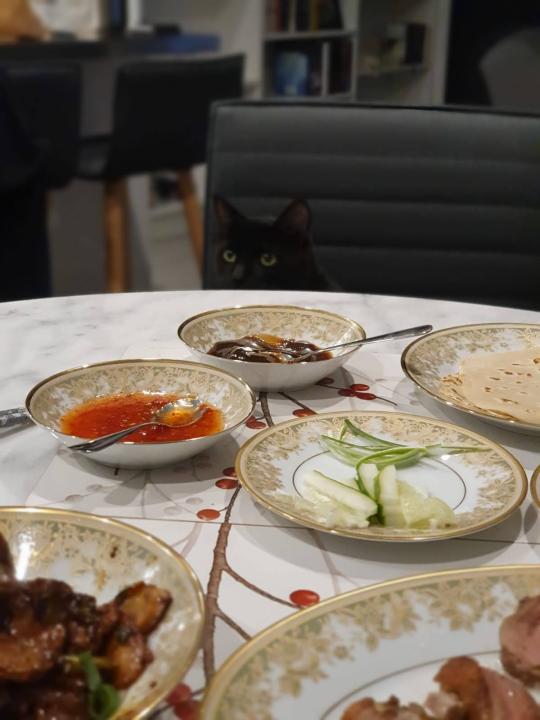
Kisu was most distressed that we did not feed her anything from this feast.
The Playlist
I ended up finding this “Chinese Indie & Rock” playlist on Spotify, which I really enjoyed. I could understand none of the songs, but I enjoyed the heck out of a lot of them. I’ll probably keep listening to this playlist - they were definitely my sort of jams.
#China#PRC#Grandmaster of Demonic Cultivation#mo dao zu shi#mo xiang tong xiu#the poppy war#the dragon republic#the burning god#r. f. kuang#book review#world book challenge#rf kuang#these violent delights#chloe gong#the woks of life#hua sheng su#sesame peanut brittle#he tao su#chinese walnut cookies#walnut cookies#nain gao#stir fried rice cakes#peking duck
8 notes
·
View notes
Text
BNHA X Cars
KaminariSo, this is basically BNHA Street racer AU. But to be more precise I’m picking the cars for the characters from BNHA. Because cars have characteristic, it has personality and it describes you as a person. Not just based from the body but the engines and the car as whole. So, this is my pick of cars for the character of BNHA
Part 1 For the boys
I’m going to divide it into 2 cars. One is for daily drive/Sports car and the other is The Supercar. The Sports car will describe them as characters individuals. While the Supercar will describe their full potentials.
Midoriya Izuku
Midoriya Izuku, The protagonist of the Anime. He is too good of a boy to mess around street Racing. The Color for his car is obviously Green, in that case I Recommend Him.
Sport car/ Daily Drive:
The Mitsubishi Eclipse GSX.

To be more specific. It is Brian’s First car In the Fast and the furious franchise (R.I.P Paul Walker). This car is one of the Tuners favorite car to modify. It is run by 4G63 Engine, it is the same Engine that run an EVO F*CKING LANCER which is one of the finest cars that has been made on earth (Minus the Turbo). So it plays well with the whole inheritance thing with All Might.
Supercar:
For the supercar, I would Recommend McLaren 675LT
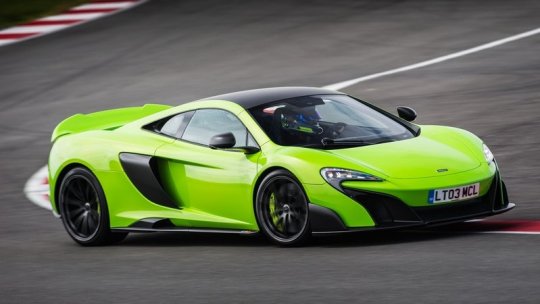
This car Look Great In green. The whole characteristic of this car reminds me of Midoriya. This car shown how it can blend to the society, how it was able to move fast and aggressively while at the same time maintaining Elegance. This car looked slim, but its performance is something else 3.8 L V8 Twin Turbo Rear Wheel Drive (RWD) Gives the ability for the driver to drive like a maniac. The car produces more or less 675 Horsepower (Just like its name) and can go to 0-100 Km in 2.9 Seconds and a top speed with 330 Km/h (205 Mph).
Bakugo Katsuki
For Bakugo, His car has to be loud and Fast! He needs a car that’s intimidating. For the color I’m Thinking Red, Yellow or Black. But since the car need to look Antagonizing, I’m going with black. So, the car that I propose.
Sport Car/ Daily Drive:
Dodge Charger SRT Hell Cat 2015
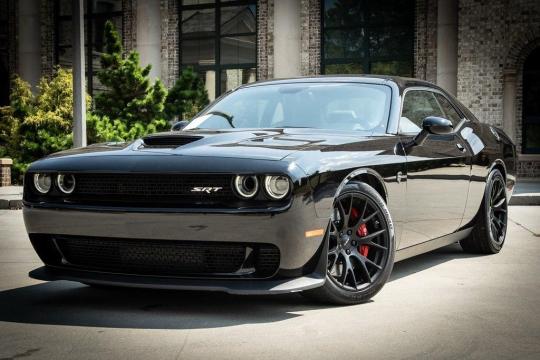
This car is a 6.2L Hemi V8 Supercharged. The roars in this car is nothing short. This car is for sure is Intimidating. The roar of the engine is equivalent to Bakugo’s Roar of explosive anger. I was considering the newer one like the SRT Redeye Hellcat or even The Demon. But the demons is more of the inner demon screaming trying to get out. It needed a Rumbling sound of the V8, The insane roar that is deafening.
Supercar:
For the Supercar, it is very difficult. I can choose Hyper cars but they just felt a bit too well mannered compared to Bakugo. But I’ve given a lot of thought and the only car that fits is This
Pagani Zonda R
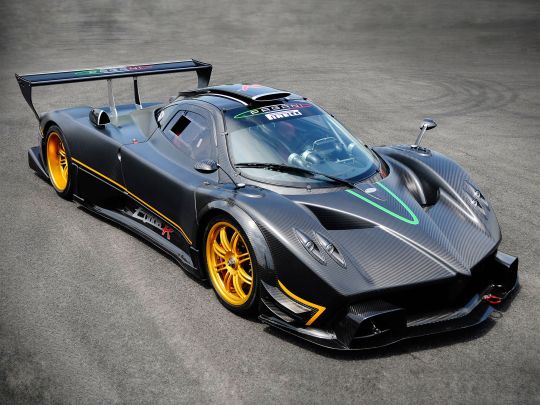
This car is basically an f1 with a two-seater and a roof. This bad boy is a track only car. So, it is “Street Illegal!!” But that won’t stop Bakugo for using this beauty. This car on high rev speaks will be all the explanation needed on the reason why I chose this car. A car with 700 BHP and only weight 1,070 Kg (In comparison Ford focus weight 1,471 Kg) Which is like a feather.
Todoroki Shoto
For Todoroki His car has to be cool, matured and Luxurious but also High performance. I’m a bit mixed up with the colors Whether I should make it blue or white or red. But since I cant decide I leave it in the ‘Grey’ area. Get it? Ill just get on with it.
Sport Car/ Daily Drive:
Aston Martin DB11

Aston Martin is well known on it’s Luxury and History. Which fits Todoroki’s Prince aura/Characteristics. The performance is also nothing short, Aston Martin is also well known to make a brilliant Engine for racing. A twin turbocharged V12 Produce 600 BHP with a top speed 201Km/h (125Mph).
Supercar
For the Super car, I think Lamborghini Huracan Performante.

It is a naturally aspirated 5.2L V10 Engine AWD. This car has a fierce fiery engine on its car but still has that cool matured Body. And the ALA (Aerodinamica Lamborghini Attiva) Is brilliant. It is an active Aerodynamic system that allows the car to go faster.
Tenya Iida:
Sport Car/ Daily Drive:
Is the Brabus 800 GT 63s
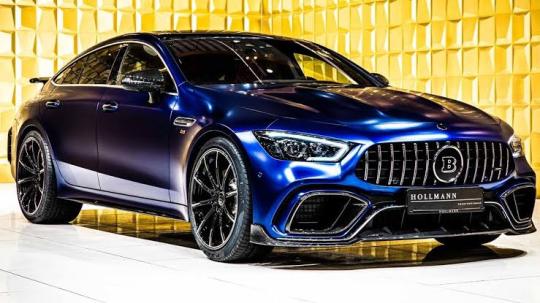
This car is perfect fot Iida, It has a look in which my friend quote “Sophisticated Look”. And Mind you this car is probably The Fastest Car! For the sport/daily drive Car compare than anyone else in the list. This car packs a crazy 800 BHP and that’s says it all
Supercar:

The fastest Car In the world! In 2010. The specific look that I would like to go is Drift From Transformer: Age Of Extinction. That Blue Lining is perfect for Iida. For some people engines might be boring, But this car have the power of 1200 Horses in it
Kirishima Eijiro
Sport Car/ Daily Drive:
The car that this Manly man need to go with is the 2020 Mustang Shelby GT500.

The Engine has a named called the “Predator” V8 Engine. 750 BHP is nothing short and the roar from within is on par with Bakugo’s SRT Hellcat.
Supercar:
I was having second thought of choosing this car. But whenever I think of Kirishima in a car, This car always pops into my head

Lamborghini Adventador SV. This car Looked manly and menacing. Why I thought about this car, is that it associated it self with a bull in which Kirishima and this car can relate to. A loud V12 Engine roars loud and deep in a intimidating voice and its perfect.
Sero Hanta
Sport Car/ Daily Drive:
For Sero the car has to be traditional but still a good car nonetheless. So I pick A classic Porsche 911 turbo 1982.
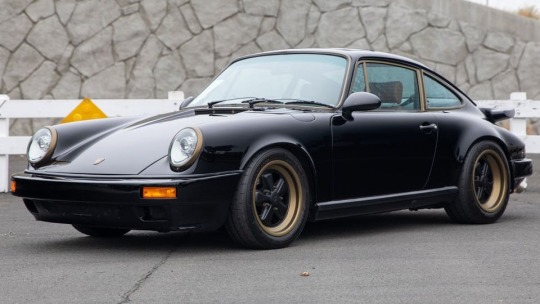
It is a classic sports car, It is tunable which make the car run fast.
Supercar:
Ferrari 458 Italia

This car is a normal Aspirated V8 with a high rev engine. It creates something Revolutionary From something traditional.
Kaminari Denki
Sport Car/ Daily Drive:
It has to be the SUPRA!!!!!!

This car is definitely a meme, it fits with Kaminari Personality. Seeing them is like “WTH ARE YOU DOING?!” Because both Kaminari and the car would do something ridiculously stupid.
Supercar:
For the Supercar I Would say The Lexus LFA

Lexus is one of the Artistic Legacy of the JDM Cars. It is one of the legendary Supercar that ever existed. The Normal aspirated V10 Sounded like Pure Thunder striking down on the earth. Sound menacing and amazing. It fits for Kaminari Racing Persona (Or even his villain Persona).
Mashirao Ojiro
Sport Car/ Daily Drive:
Ojiro is a traditional Japanese person, So his car has to be totally Japanese. My pick have to be The S30 Fairlady Z.
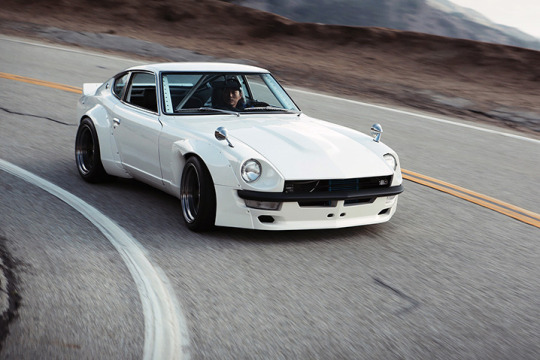
To be exact the RB26 Swapped Fairlady Z from Sung Kang (Han’s Actor car from “Fast and Furious”) And that’s all I need to say about this car.
Supercar:
For the Supercar It has to be the last piece of The JDM Legend. It is The GTR R35 NISMO.

This car is perfect for Ojiro, They both are the Representative Character of Japan.
Tokoyami Fumikage
Sport Car/ Daily Drive:
Blackbird 370 z

For me it’s a no Brainer. This car was featured as the Replacement of Blackbird in wangan Midnight When they aren’t allowed to use the Porsche. The slick Headlight and the whole body look is the description of Tokoyami Dark Shadow
Supercar:
Mclaren MP4-12C
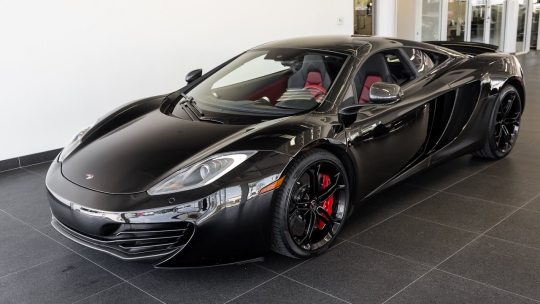
That Describes Tokoyami as a whole. One of the best car that ever created in history that changes the whole world. With the black fierce look, This car looks like a shark that flies on land.
Sato Rikido
Sport Car/ Daily Drive:

Sato is a muscular guy. So His sports car is definitely a Muscle Car. But It seems I have a trouble in finding it, It has to be a classic but not too old. In that reason I recommend Saleen s281 2000
It has that sporty look but still have the Muscle car Essence and history
Supercar:
For the Supercar It has to be The Corvette C8.R

This car is a new take to American cars. It is a Incredible move from the American automotive Industries.
Koda Koji
Sport Car/ Daily Drive:
For Koda He is definetly a good Boy so hew probably uses a 4-door car. For instance The Subaru WRX STI 2016.

It doesn't seems Menacing but it still can move around well and when it drives, it definetly drives well.
Supercar:
For the Supercar it is definetly a NSX-R 1992 Tuned with a Rocket Bunny Body Kit.

Koda is definitely a Honda city boi. From the name itself, I am 100% it fits with Koda. Back in the day if you want a Ferrari but you can’t afford one. You’ll buy an NSX.
Shoji Mezo
Sport Car/ Daily Drive:
For Shoji I think Ford’s Trophy truck.

A friend of mine said that Shoji, is the kind of guy who would drive a van for daily basis (So I guessed it has to be an American Car). But to me, Shoji is the Kind of guy that likes to get Dirt under his wheels. And I'm pretty sure Shoji is the kind of kid that doesn’t Mind flying in the car on daily basis.
Supercar:
For the Supercar I propose, Ford Gt.

It is well planted and the car is very wide. Fitting to describes Shoji’s ‘Arms’. Although it might not have similarities with his daily car, But this car is all I could think of.
Aoyama Yuga
Sport Car/ Daily Drive:
For the Daily Drive, it is obviously something Luxurious, Something High class Like Bentley GT 2019. The V8 Version.

It is a confiscated yet sporty look in a car, It looked like as if he stands out compares to the other Luxury Cars
Supercar:
For the Supercar, It has to be describe as “Noblesse oblige” And the Car that fits the most is Noble M600.
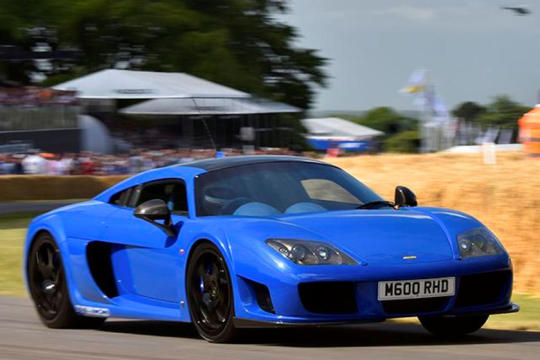
It is a Supercar with all the classic features. It is a RWD Manual Transmission Car, a twin turbocharged 4L V8. Packs 640 BHP 0-60 in 3.1 Second.
Mineta Minoru
Sport Car/ Daily Drive:
It’s the Mitsubishi Eclipse Spyder GTS

Basically, this car is the Japanese Equivalent To pimp rides. Even though This car is featured in The Fast and The Furious, It is just a now show car. Compared the old one, This version is a slower and much more difficult to Modify. But it is still a nice car and fun to drive with, and it is a popular car in the car culture.
Supercar:
For Mineta The Supercar might be really difficult. So in the end I just came up with the Villain version. (Inspired by ‘Nadaboodraws’ Villain Mineta on Instagram) I came up with this

It is the Audi R8, It is one of the best Affordable Supercar you can get in the world. It is 4wd But it is still an aggressive car with a mean Look.
Okay that’s all I can give for this part. For the next one will be the girls of class 1-A. If you have different opinion let me know, I would love to hear all of your thoughts and if you use my list you can go ahead and use it (But please do tell me, because hearing it will be my vindication and that would make me really happy). Anyway, thank you for reading until this far.
#BNHA#MHA#Boku No Hero#My Hero Academia#Midoriya Izuku#Bakugo Katsuki#Todoroki Shoto#Tenya Ida#Kirishima Eijiro#Sero Hanta#Kaminari Denki#Mashirao Ojiro#Tokoyami Fumikage#Sato Rikido#Koda Koji#Shoji Mezo#Aoyama Yuga#Mineta Minoru#street racer au#Street Racer#Racers au#Racing#au#Cars#European#JDM#American Muscles
8 notes
·
View notes
Text
Opinion on the rioters who dressed as The Punisher
Opinion on the Rioters dressed as The Punisher:
I recently found out some of the Capitol rioters were dressed as The Punisher from Marvel comics. Do I blame the character? No. However, i have become very cautious in regard to hardcore fans of the character and not merely over this.
First, I admit, I never really liked The Punisher as a character. I thought of him as an edgy byproduct of comics gradually shifting to being darker and grittier. He was one of the first heroes to not preach about justice and redemption but instead wanted to kill. He was not a protagonist. He started as a villain in the Amazing Spider-Man comics. Stan Lee had not liked the character. (This is a fact that is easily checked and Googled).
In the late 80s and early 90s he became very popular as comics became darker and so he was given his own comic and appeared more often and often as a protagonist anti-hero.
I never liked the concept of him. Sure, he had a sympathetic backstory but the “Killing is the only answer” never sat right for me. The lack of mercy he showed even to the repentant, it always bothered me. I got that he was supposed to be mentally-ill but in his own comics his behavior was, far too often, justified.
Other media tried to mimic the character. The Ben Affleck Daredevil behaved more like The Punisher than Daredevil. Instead of a defense attorney he was now a prosecutor. And if he lost a case he would hunt down the criminal and kill him, brutally. There’s one scene where he severs a man’s spine and then gloats as a train comes to hit him, as he lays paralyzed on the track. That’s not Matt.
Ben Affleck again played totally-not-Punisher in his portrayal of Batman. A gun-using batman that was loosely inspired by Frank Miller. And all the Zack Snyder Fanboys came crawling out of the woodwork, insisting that this was “realistic” and “more accurate to the comics” and “but look, he killed in these old comics!” They either were lying by omission or didn’t know about Crisis on Infinite Earths and how main continuity Batman had been anti-gun and anti-killing since at least 1985. The entire plot of Alan Moore’s The Killing Joke was based on this established lore.
There’s no doubt Punisher has had a serious influence on popculture and something I called Darkity, dark, dark writing or as others have named it: “Edgelord.”
It’s a sort of “dark and gritty” “realism” popular among boys between the ages of eleven and fifteen who genuinely think crime would end if we shot every criminal and don’t realize that most real world police officers have never drawn their gun, despite what you might see in the news. If murder truly was the norm, people wouldn’t still be horrified by it.
Now on to the fans. There are far too many Punisher fans who think he was and is in the right. They think he is an aspirational figure to admire and look up to. A “realistic” hero by Zack Snyder standards, because hope and mercy are what is apparently unrealistic in a world consisting of aliens, Greek Gods, witchcraft, and even the folkloric Sandman (That’s in DC, not Marvel though Nightmare is arguably the Marvel equivalent).
I used to be Facebook friends with a Punisher fan. He was equally obsessed with The Joker. At first i just let it be. You’re allowed to like edgy or dark characters. There’s no harm in that. But... he got creepy. He would quote the Joker in conversation about “SJWs” and “progressives.” He would say things like “My eyes were opened as yours soon will be.”
He was convinced liberals tried to ruin The Joker movie and posted pictures of the Joker dancing down the stairs with “HAHAHAHAHA! Suck my dick, Progressives!” in at least two of the facebook groups I run. It got embarrassing that when people would search for my Horror Comics group, the sample post Facebook gave was that one.
He kept talking about how both The Punisher and The Joker are right. His facebook picture would alternate between the two characters depending on his mood. He would post memes “explaining” why The Punisher is right.
He would post articles about this or that criminal being arrested and refer to them as “it” and “thing” and how “it should be tortured four hours before someone kills it.” things like that, about various people who did things that were (admittedly) horrific and reprehensible but he would go into graphic detail about what he wanted to do with them Very sadistic, Saw-like tortures before “Mercifully” killing them.
He once casually told me how he wanted to kill all progressives. I gently reminded him that I have liberal leanings and I got a “You’re different” sort of response.
As his behavior got more fanatical and disturbing, the more uncomfortable I became. After the progressives threat I made the mistake of telling someone who was mutually friends with us both that I felt threatened. Needless to say the one I have just described to you called me a liar, insisted he never said anything threatening. And accused me of being “one of them.”
I told him he had been acting increasingly strangely and needed to stop posting the pro-Joker stuff. And it wasn’t just the film The Joker. It was the version from Gotham (TV series) he tried to emulate and praised. A woman celebrity he didn’t like was soon being called “It.” Then some feminist (I didn’t agree with this person) was saying how The Mandalorian didn’t have enough female characters or diversity and should be canceled. It was some stupid opinion piece published by a site like Buzzfeed or Io9 during the first season of Mandalorian.
This guy was very conservative but had a bad habit of seeking out fanatical articles like this to make himself angry. The only time I ever agreed with him on the matter was when he came to my defense for not liking the 2016 Ghostbusters. Someone in my own Gothic Horror Facebook group had decided to call me a self-loathing misogynist and insisted the only reason I didn’t like it is because the characters were women. No, I don’t like slapstick comedy. I didn’t like that they didn’t bother to use real parapsychology or theoretical physics (as the original had done). I didn’t like that the “genius” of the group licked her proton blaster and that was the common promo image for the film. I didn’t like that people who praised the film entirely forgot that there was a diverse team lead by a woman in the 90s. (Extreme Ghostbusters). I didn’t like that they destroyed ghosts instead of trapped them. That violates the law of conservation and most spiritual beliefs as even being possible. It was just a bad movie.
I agreed with him on that one but when this anti-Mandalorian article came out he went too far. He insisted the woman who wrote it should be dragged out into the street and shot. He called her “it” and “thing” and said she didn’t deserve to live . I told him he was going too far, and she couldn’t take the show away, that he was over reacting.
He then blocked me. I thought it was done and over with, then the Pandemic hit.
When the Pandemic happened he unblocked me and in a revisionist history of events insisted he had blocked me because I had “lied” and said he threatened me. No, he had told me he wanted to kill all progressives, knowing that I am one. And that was not why he blocked me. It was because I disagreed about his death threats about the writer of a Mandalorian article. He wanted to fight. He alternated between insulting me and trying to show how good he was to come to me during a world crisis, like he was doing me a favor. I blocked him this time.
That night my Facebook account was disabled. Someone had reported my account as not being a real person, and Facebook wanted photographic proof that I’m real. It was re-enabled as soon as I sent in a photo but as I don’t have a smartphone (I live in a deadzone) and I’m visually impaired it was a little bit of a pain. This was not something that had ever happened to me before. And I had witnessed this Punisher fan report accounts of those he wanted to “punish” before.
And now I find out some of these rioters were wearing Punisher shirts. So yes, I keep my guard up around Punisher fans.
Do I blame the character? No. Not really. If not him they would have found someone else to try to emulate and idolize. Getting rid of the character won’t get rid of this mentality. I never liked the character but I don’t want him banned. I would be happy if less people were obsessed with him. I would be happy if those obsessed with the character didn’t all remind me of the man I described here. I would be happy if fans of the character were more likely to say that they don’t agree with the character’s actions, they just like his story.
There’s nothing wrong in liking a character with problematic behavior. But if you can’t acknowledge that it’s wrong and instead glorify and romanticize the actions of the character, that’s the problem. I love lots of characters who do bad things. I love Count Dracula. I don’t intend to drink blood and sic wolves on people. And I have absolutely no interest in impalement.
I think far too many Punisher fans don’t realize he’s in the wrong, instead want to be like him, and have trouble separating fiction from reality. I do not blame the character. They would have found someone else if not him. But unfortunately, I AM starting to view hardcore / obsessively being a fan of The Punisher as a bit of a red flag considering how many of them behave this way...
5 notes
·
View notes
Text
Weekend Top Ten #470
Top Ten Films to Watch on Star on Disney+
We’ve been watching a lot of Disney+ lately. This is partly due to the fact that our family movie nights have become, almost accidentally, a quest to watch every bit of Star Wars content on the service; so far, we’ve watched the entire Skywalker Saga and are now moving onto the spin-off movies. The younglings have become addicted: Daughter #1 is getting stuck into The Clone Wars, whilst Daughter #2 is demanding we jump straight into The Mandalorian. As for the Princess to my Scoundrel, well, she and I have been thoroughly enjoying WandaVision, which by the time you read this, will have finished. Sob! Nothing to do but gird our loins until the arrival of The Falcon and the Winter Soldier in a couple of weeks! At least this excellent TV programme appears to have whetted my wife’s appetite for watching more of the MCU movies. Maybe soon I can make oblique references to Mary Poppins, y’all, and someone else in the house will actually know what the hell I’m on about.
Well it looks as if there’s going to be even more use out of our Disney+ sub as the months roll inexorably on, what with their new Star channel. This is where they’ve shoehorned all the mucky films they bought from the naughty boys and girls at Fox; sweary adult dramas, sexy bits, and scenes of explicit wrist-slapping abound. So now we have this toybox of grown-up content to savour! What to watch? What not to watch? I’ve already started at the most obvious place by diving into some vintage Arnie with Commando, one of the funniest action movies ever made. It did not disappoint.
So where to next? Re-watching semi-forgotten classics, films I’ve not seen in literally decades? Or checking out things that slipped me by (there’s an entire list to be made of “films I read about in Empire in the ‘90s, got really excited about, but never saw”). Do I watch the crappier Die Hard films, or cheesy action movies (er, like Commando, I guess)? Or dive deep into prestige fair? Or just watch Spy Hard for the Weird Al theme tune, practically the only bit of the film I remember? The options are virtually endless.
So that’s what this week’s list is: ten films I intend to watch on Disney+ very flipping soon. Or, y’know, just play Zelda until Falcon starts.

9 to 5 (1980): there was a lot of talk of Dolly around the New Year, and my wife and I even watched a documentary about her. As a result, I had a scoot around to see if it was possible to buy 9 to 5 as a birthday or Valentine’s gift for my better half; it’s a film neither of us have seen in years if not decades, and we’re both big Grace and Frankie fans too. Alas, it’s a difficult film to get a hold of; there doesn’t appear to be a Blu-ray readily available. Praise be, then, that it’s now on Disney+; a terrific comedy film, with a nice bit of feminist bite. I’m not sure if it’ll feel dated or – post-#MeToo – oddly prescient. But I’m really, really looking forward to watching it again.
Crimson Tide (1995): I do love a good tense thriller, and I seem to remember this as being a particularly great tense thriller. This feels like one of those “they don’t make ‘em like this anymore” candidates; a claustrophobic two-hander with no real action, almost a theatrical chamber piece, but made with huge stars and a big-time director (the late, great Tony Scott). I saw it once, on video, when it came out, so it’ll be great to revisit.
The Color of Money (1986): another minor classic that I’ve not seen for decades, and a film I remember even less well than Crimson Tide. It’s cool to revisit (or discover for the first time!) films by great directors, and this is Scorsese we’re talking about. Cruise as a freshly-minted movie star, still taking risks; Newman as a great elder statesman. I’ve genuinely no idea what it’s like, it’s been so long, but I’d love to see it again. Just wish The Hustler was on D+ too!
Quiz Show (1994): I’d mentioned before that there are loads of films from the ‘90s that I read about as an eager young film fan but never saw; this is one of them. An apparently-great drama about corruption at a hugely popular TV show in ‘50s America, with Ralph Fiennes in a very early Hollywood role. I think I’d enjoy it.
Looking for Richard (1996): another of those ‘90s films…! This fascinated me as a teen, and I’d love to see it: a documentary about Richard III, made by Al Pacino, featuring people talking about Shakespeare (got a lot of time for that) and also scenes of the play performed and filmed. It’s a real curio; also weirdly came out around the same time as McKellen’s Richard III. Maybe something was in the water? We’re due another big Rich in my opinion.
Jennifer’s Body (2009): a follow-up from Juno writer Diablo Cody, a horror centred around high school and female sexuality, this has always seemed like it might be a dark, delicious delight; it wasn’t very well received at the time, but has grown in cult status; as has its star, Megan Fox, who I’d argue has not had the easiest time within Hollywood. Anyway, I really like the look of it, and it’ll be cool to check it out.
Tombstone (1993): I love a good Western, and I seem to remember that this is a very good Western. A story of Wyatt Earp that goes beyond the famous gunfight, my memories of this are very vague; I know that there’s a very good Val Kilmer performance as Doc Holliday, and of course Kurt Russell as Earp himself. I might try out that “watch along” feature and watch this, remotely, with my dad.
Romancing the Stone (1984): I probably haven’t seen this since the eighties so I’ve got no idea if it’s really any good, but I do remember enjoying its Indy-inspired adventurism and – in particular – Danny DeVito’s bad guy. Douglas is always great value as a leading man, although from what I’ve since read this is really Kathleen Turner’s show. It’ll be interesting to see if it holds up, but hopefully it’ll be a good stop-gap until they finally get the Indy films up on the service.
Good Morning, Vietnam (1988): another film that I want to revisit, even if I remember it a little better than others on this list. My memory is that it’s utterly fantastic, a really stark look at the realities of Vietnam during the time of the war, and also a phenomenal, very human performance from Williams. Also I remember it being very funny when he does let off some steam (sorry, bit of Commando creeping in there). And really, it’s Williams I want to see again; that earnest, real, pained but beautiful Williams we get in his very best performances. It’s very likely I’ll cry just watching him on screen. God, I miss him.
Independence Day: Resurgence (2016): I needed some crappy sequel to talk about, and here it is. I can’t overstate how much I loved the first Independence Day in ’96, so the (apparent; I’ve not seen it) terribleness of this sequel hit me like a sledgehammer. It can’t be that bad, can it? Is it not at least so-bad-it’s-good? I mean, the trailer made it look atrocious, and it’s killed off Will Smith – the best character! – off-screen, so odds are not good that it’s a hidden gem. But I’ve got to know.
This was actually a pretty tough list, and I had to knock off some films that I’d love to rewatch (Conan the Barbarian, The War of the Roses), as well as stuff like Idiocracy and Office Space that I’ve never seen. Also Kingsman: The Secret Service, which is a fairly recent release that slipped me by, and I’m not sure why I’ve never gotten round to seeing; I blame the kids! Also, there was going to be some xenomorph or xeno-monkey action on here, but frustratingly all the Alien (and Predator!) movies are missing, and the recent Planet of the Apes trilogy – which I’ve also never seen! – is only served by its middle instalment. Yeah, I can watch the seminal ‘60s original again (and I may!) or the indecipherable and strange Tim Burton version, but what about, y’know, the trilogy that everyone raves about? I assume this is due to pre-existing deals keeping the films elsewhere (elusive…), but the sagas of Alien, Predator, and the complete Die Hard package are – I believe – being kept until most profitable (mark my works: Die Hard at Christmas). Anyway, it’s a bit frustrating, that, as I’ve never seen Covenant or The Predator, and I’d love to watch the whole lot from the start anyway.
I guess I can console myself by also watching the one Die Hard film I’ve never seen, namely the critically-acclaimed A Good Day to Die Hard. I mean, I’m assuming it’s critically acclaimed. I guess I’ll find out.
3 notes
·
View notes